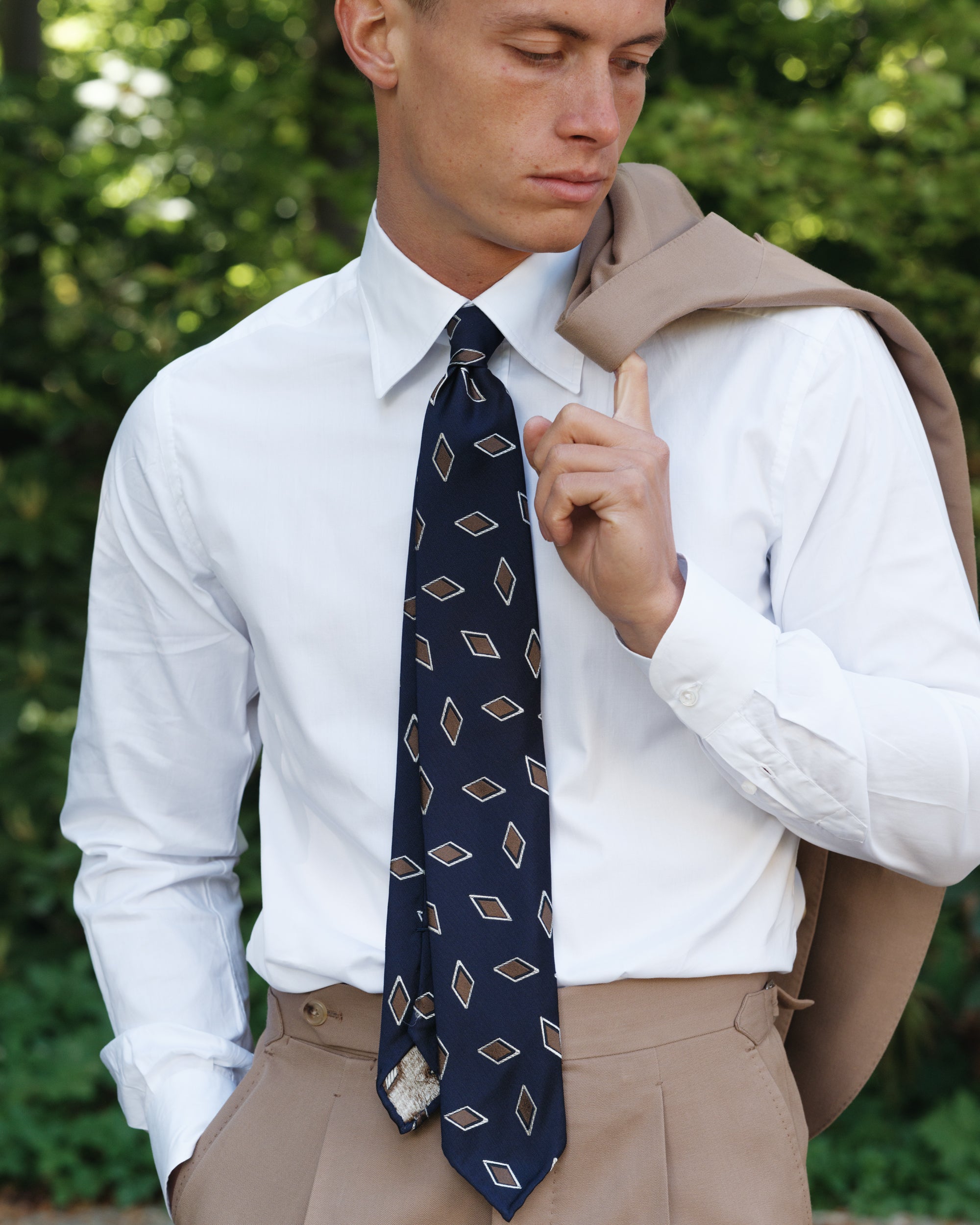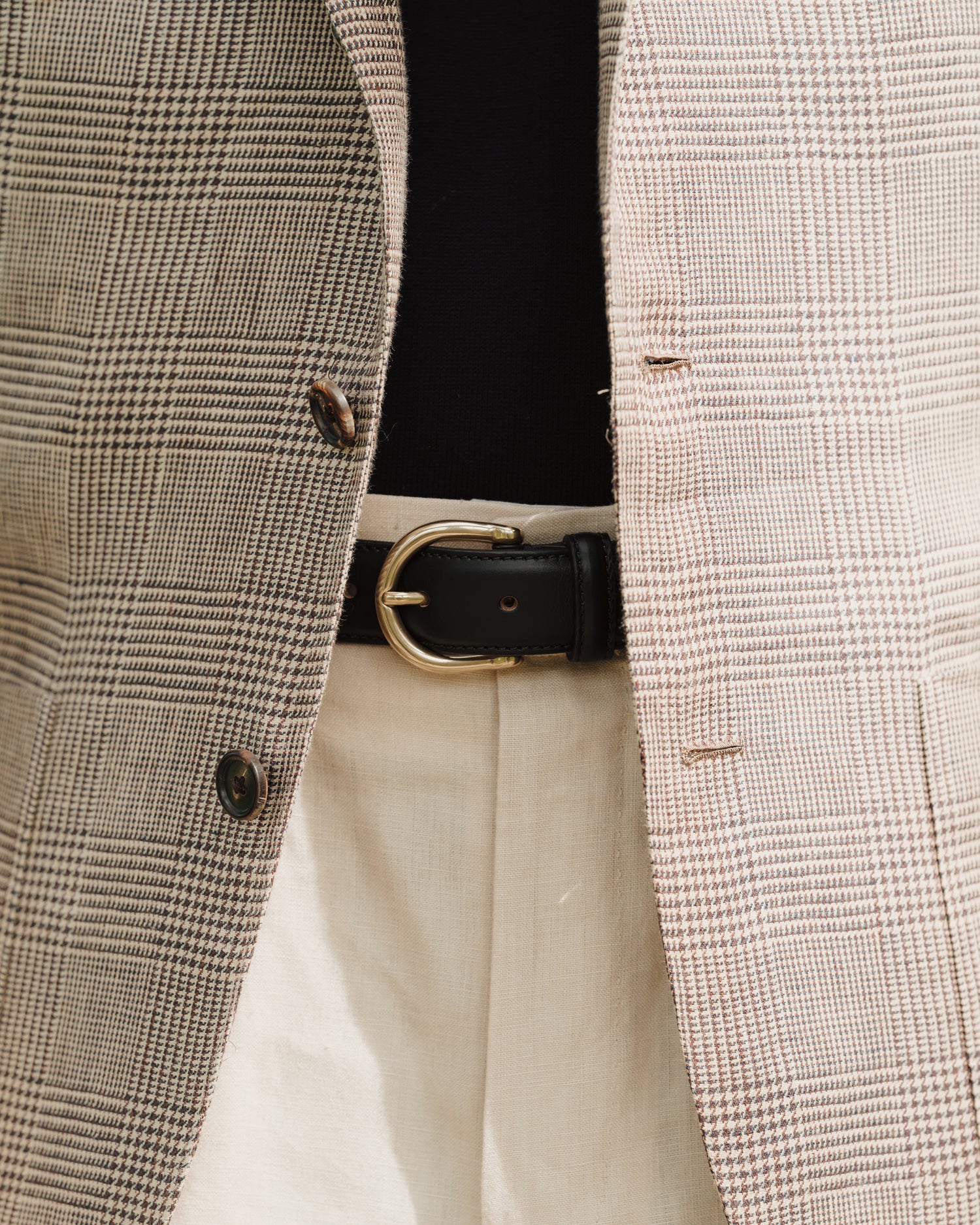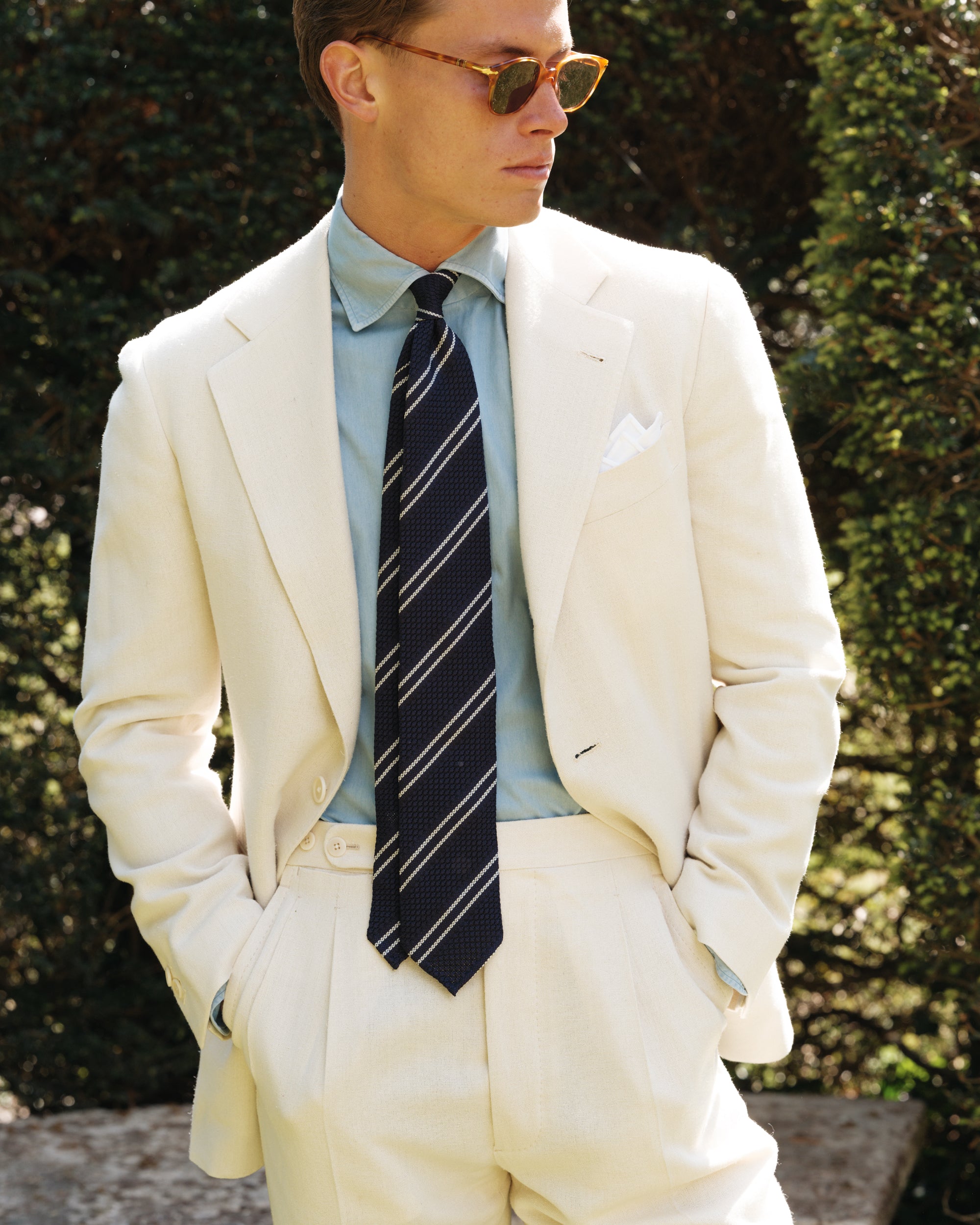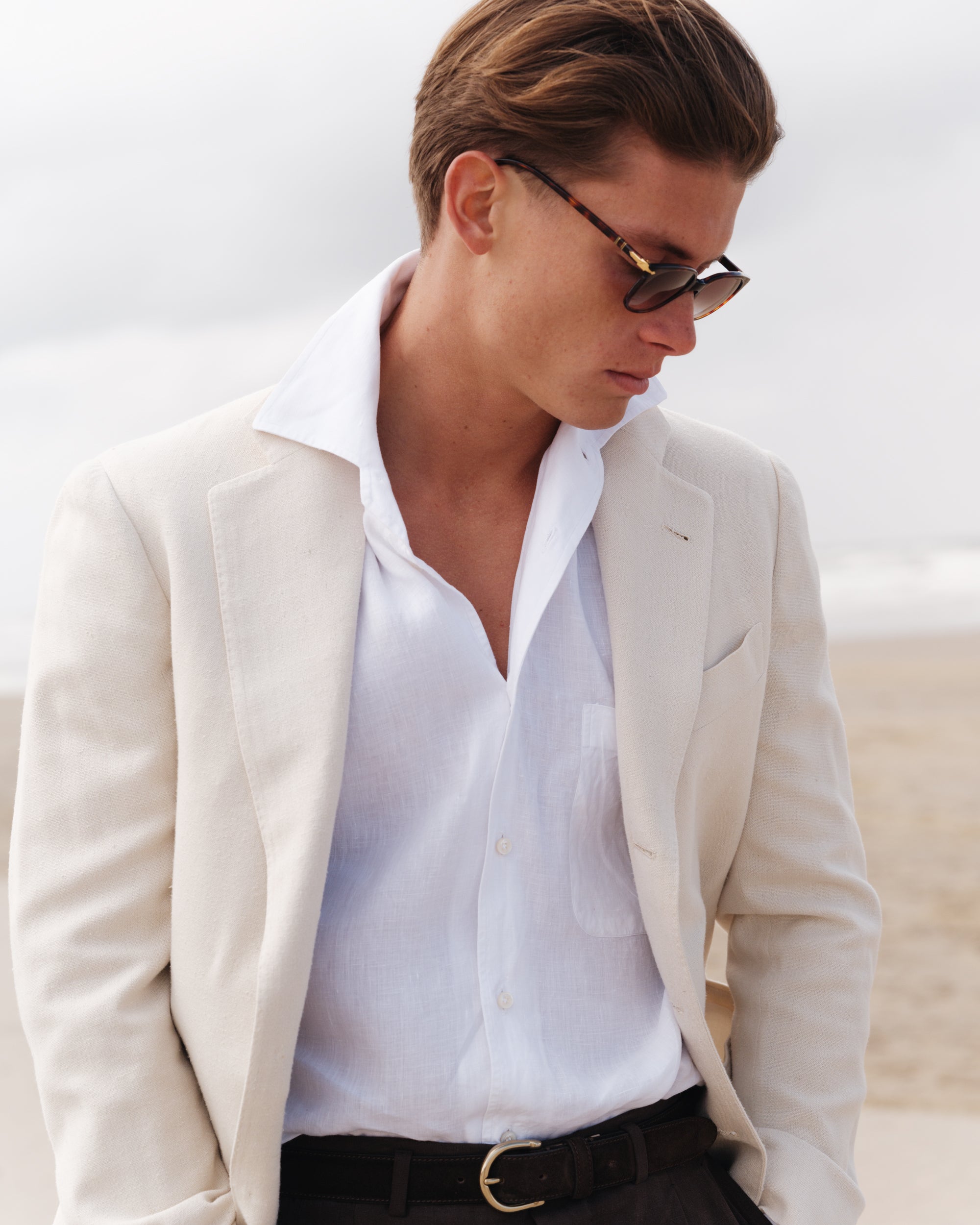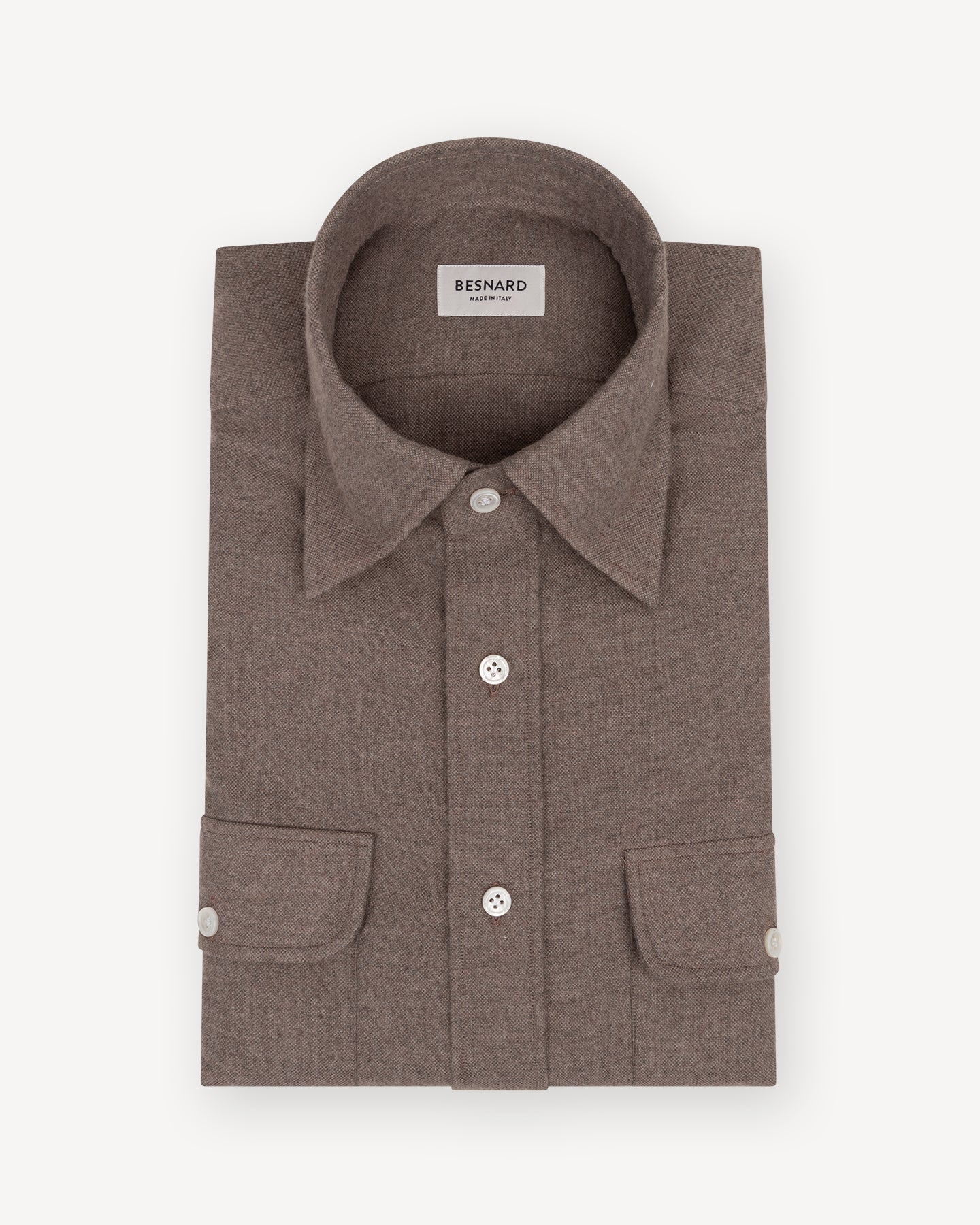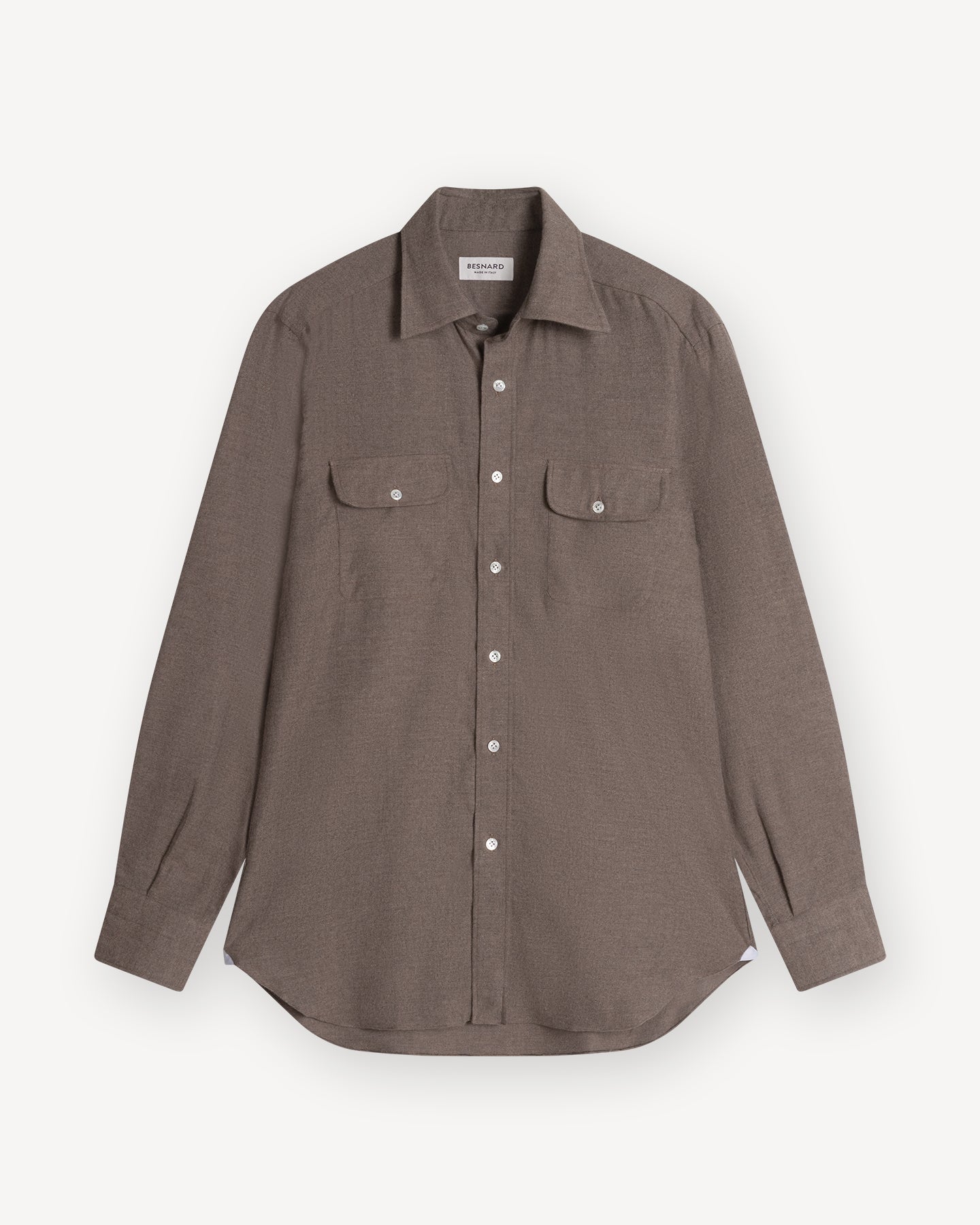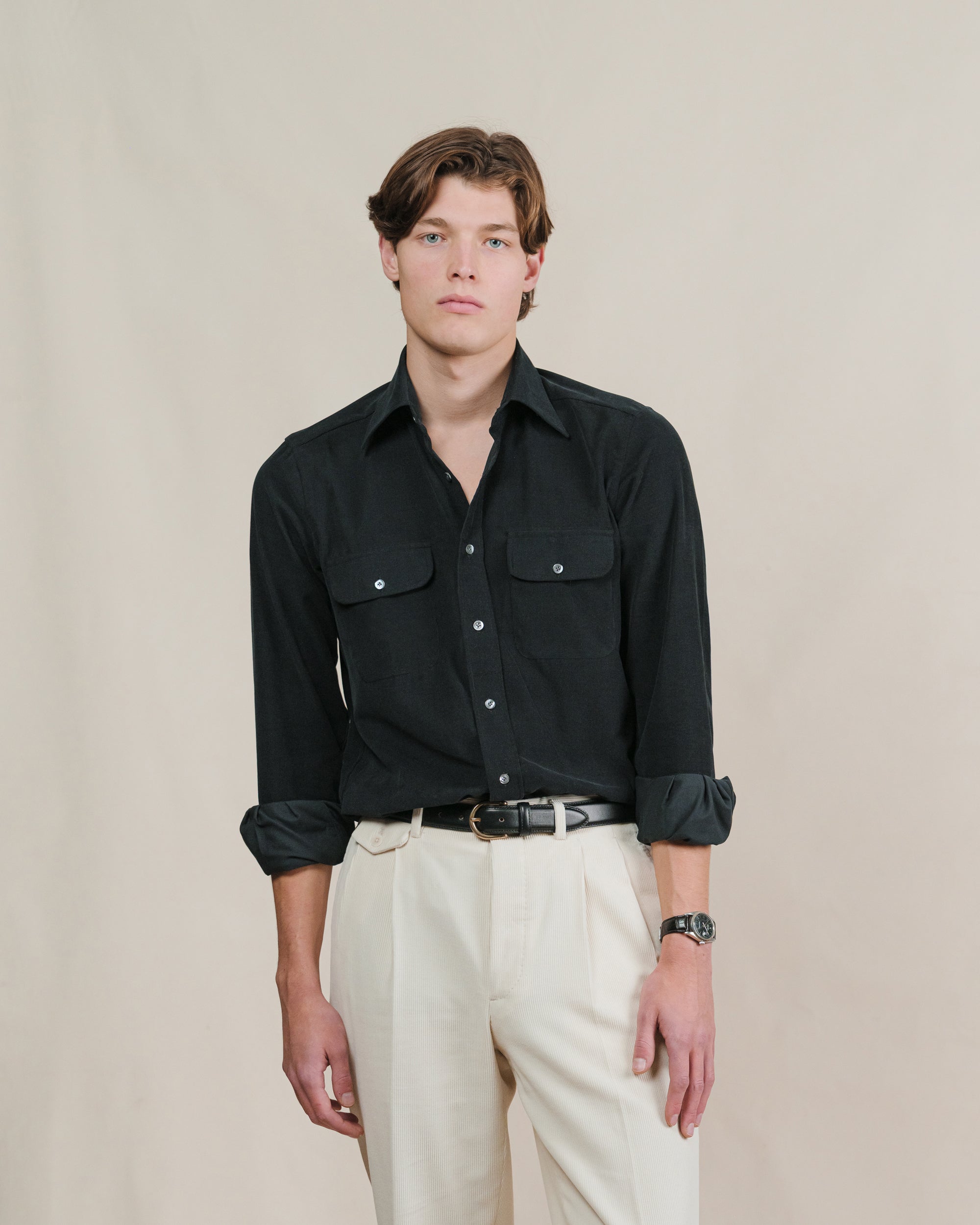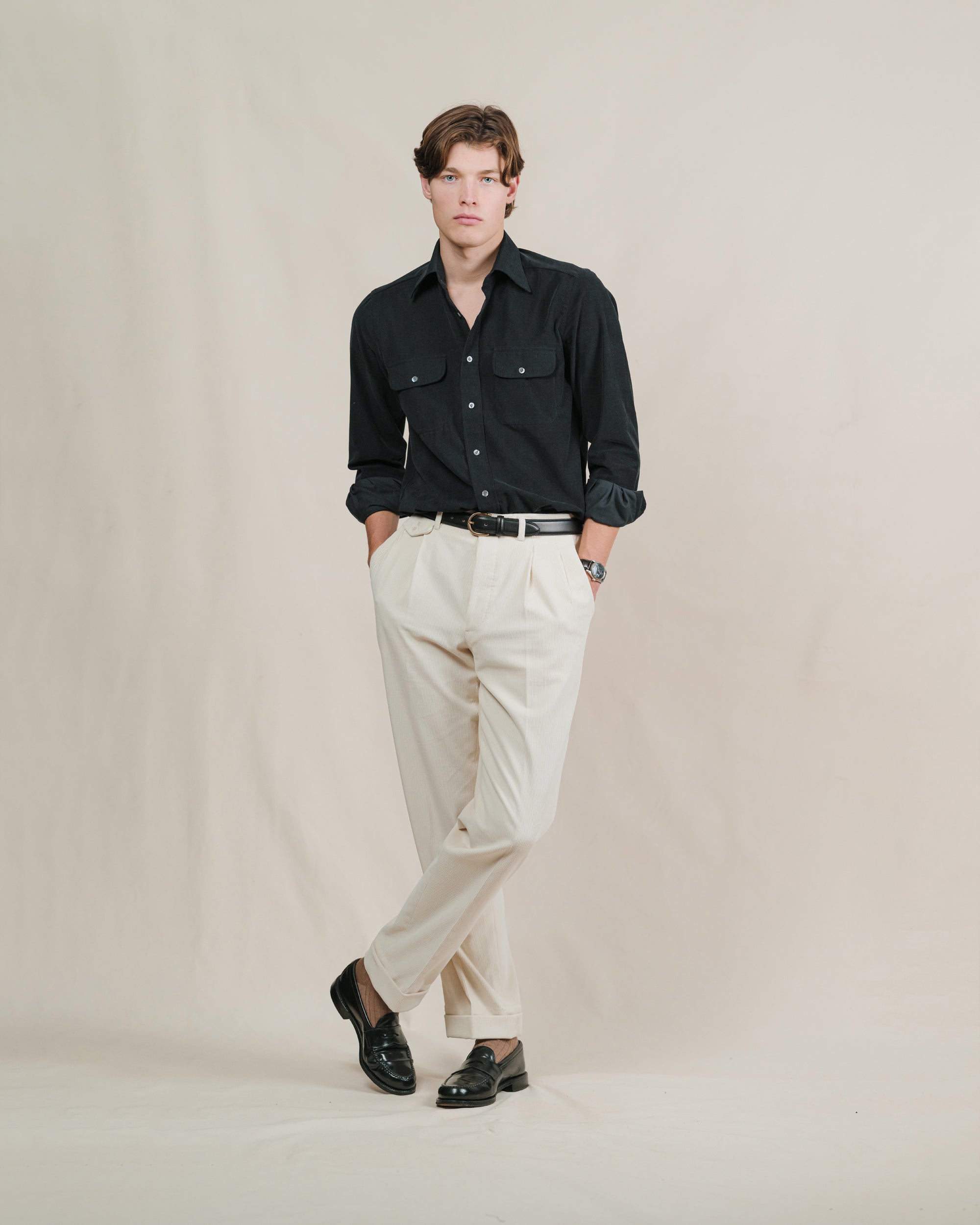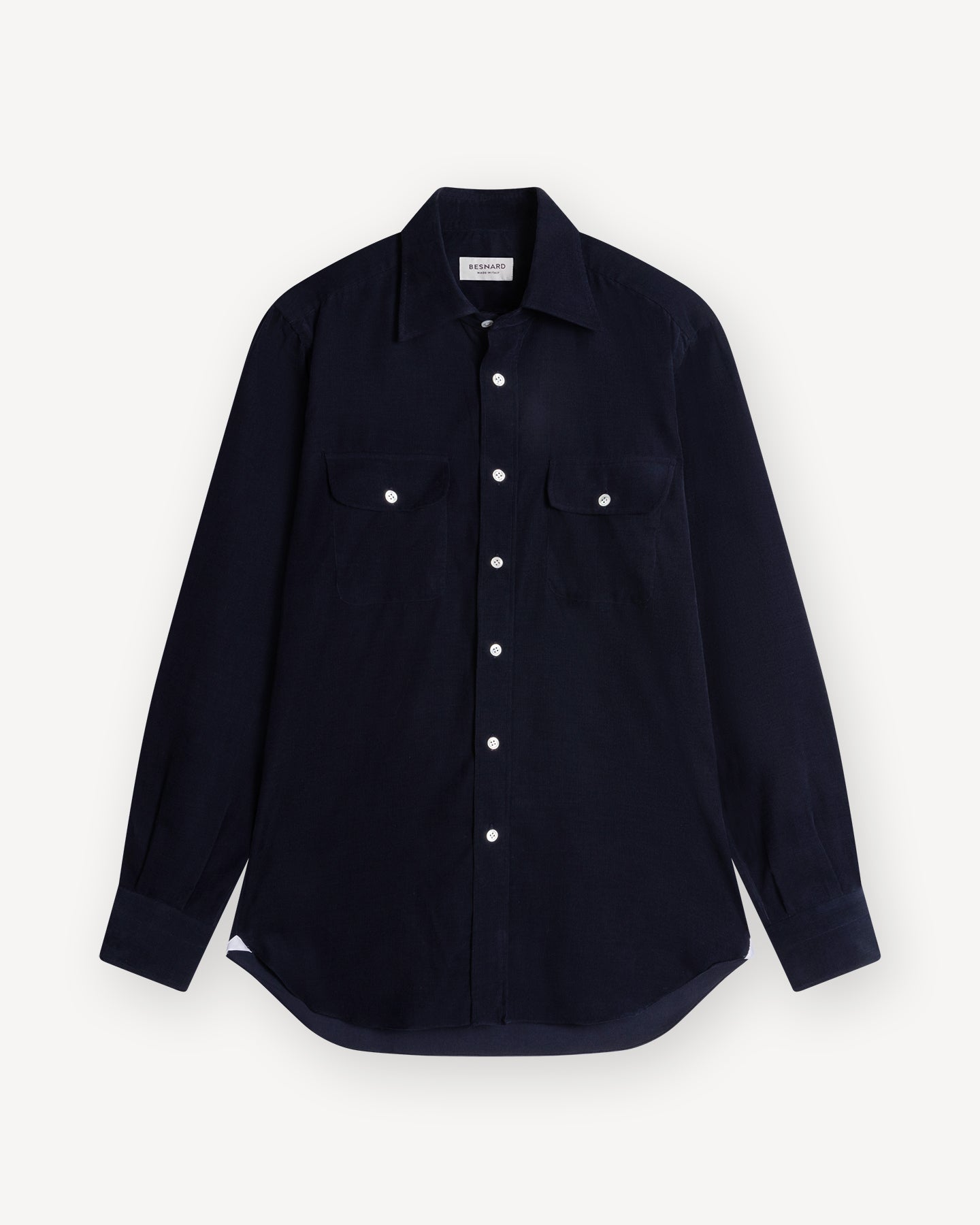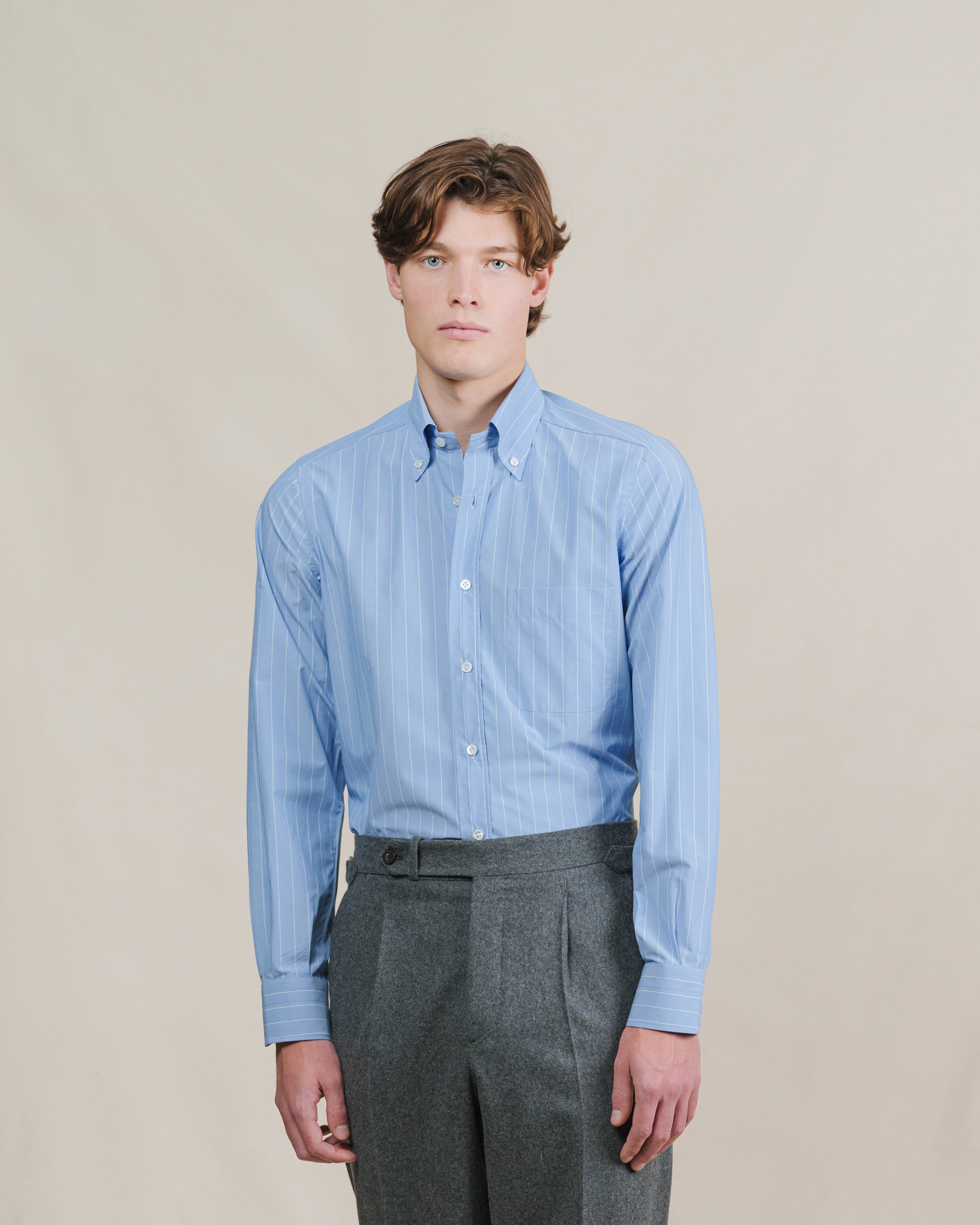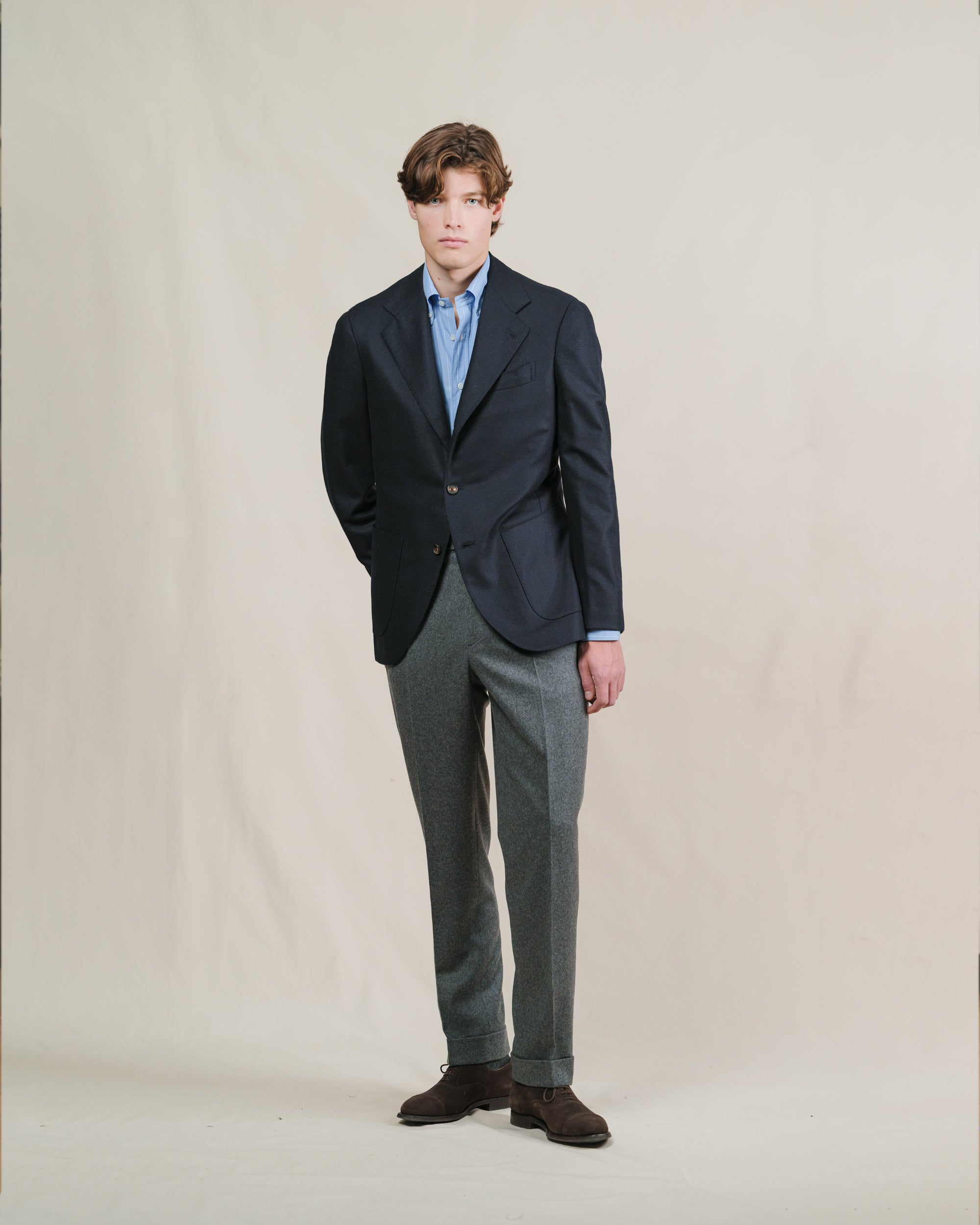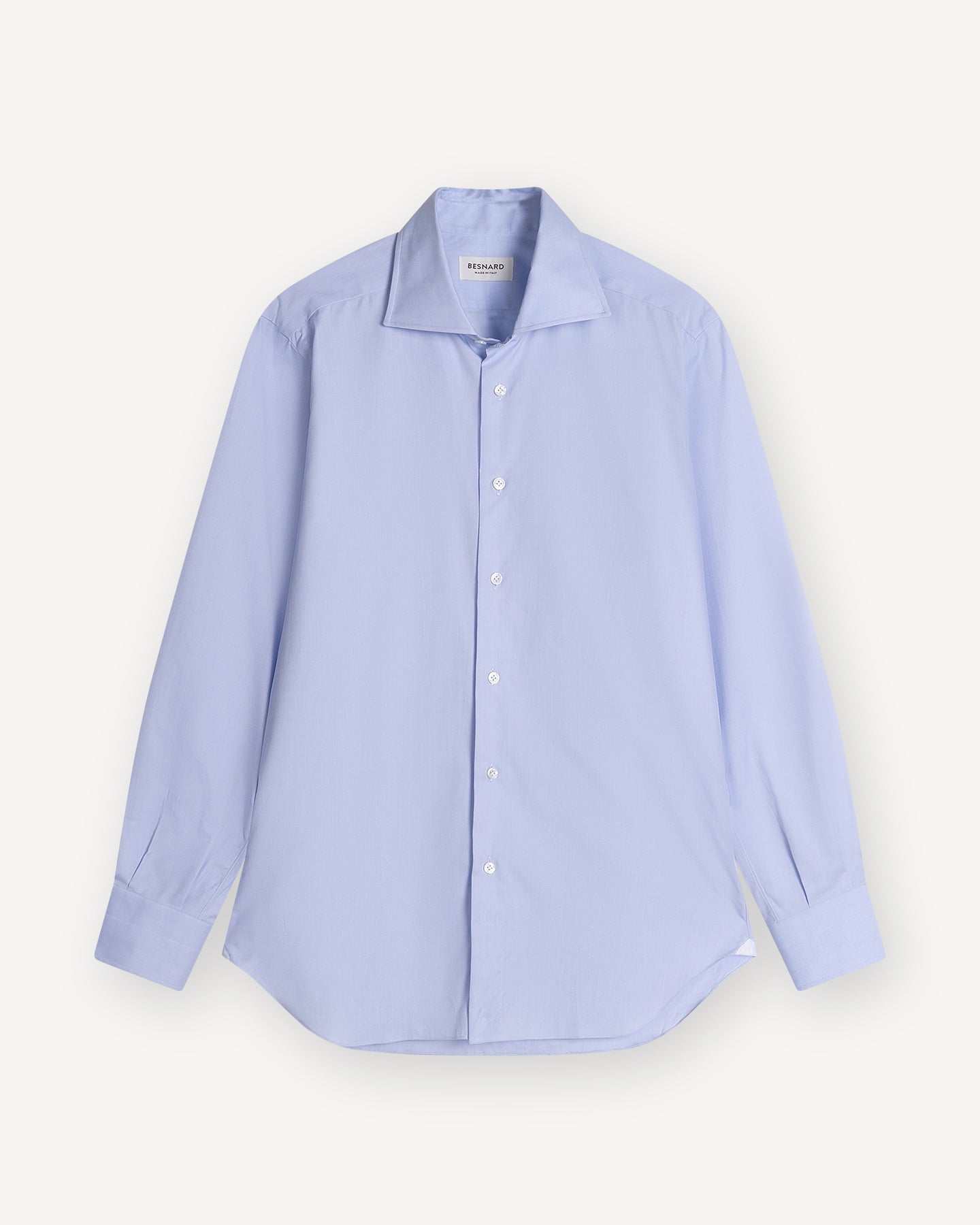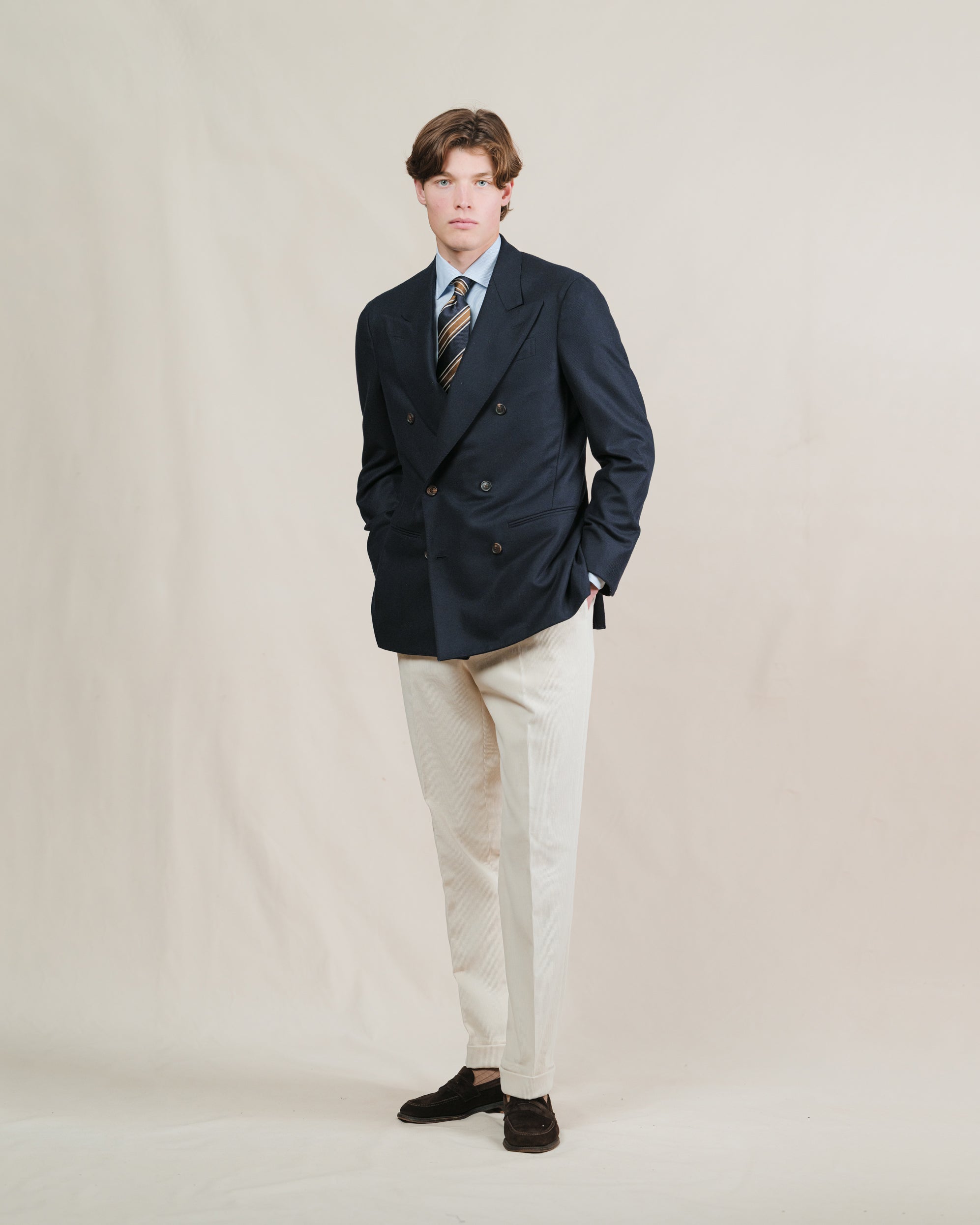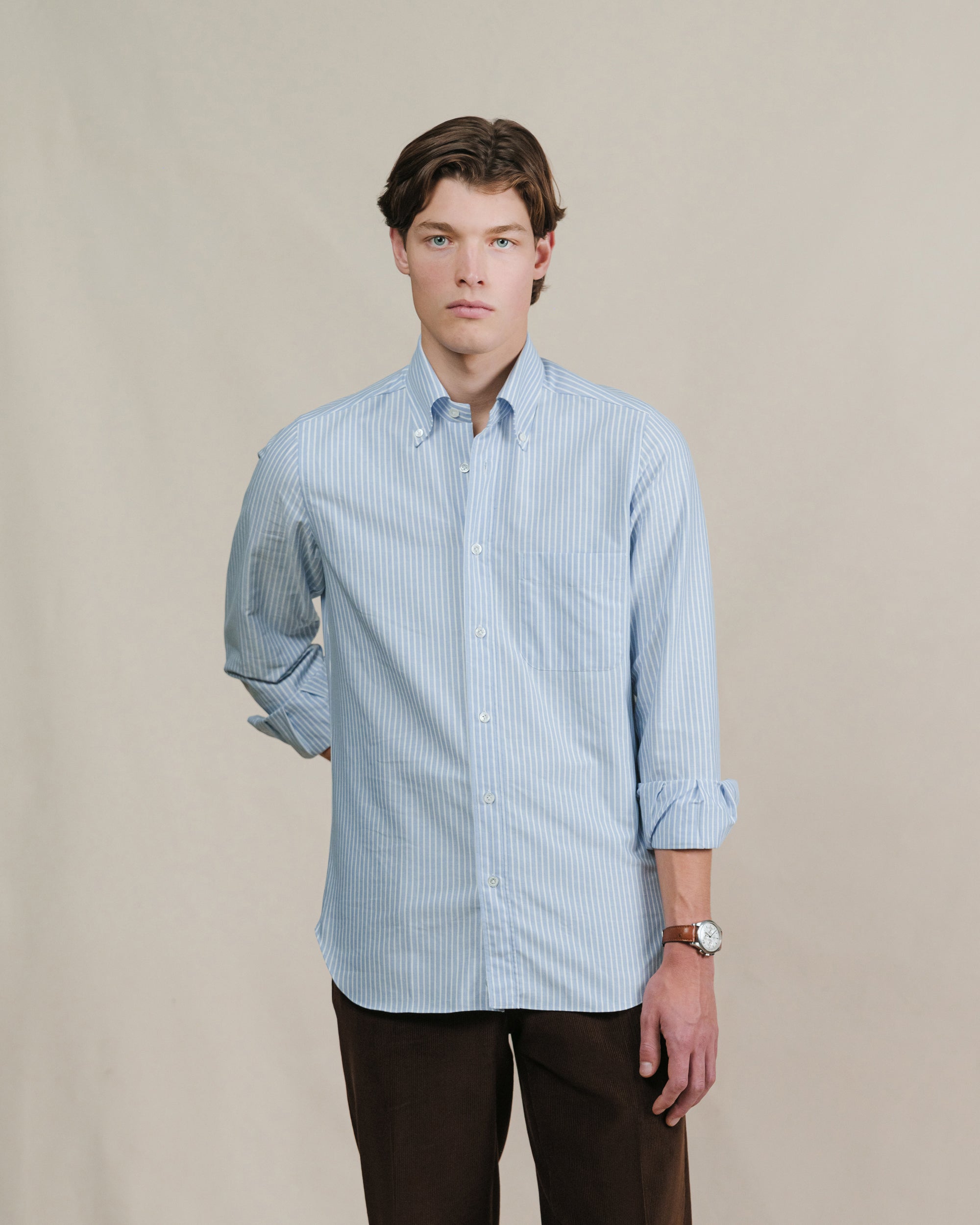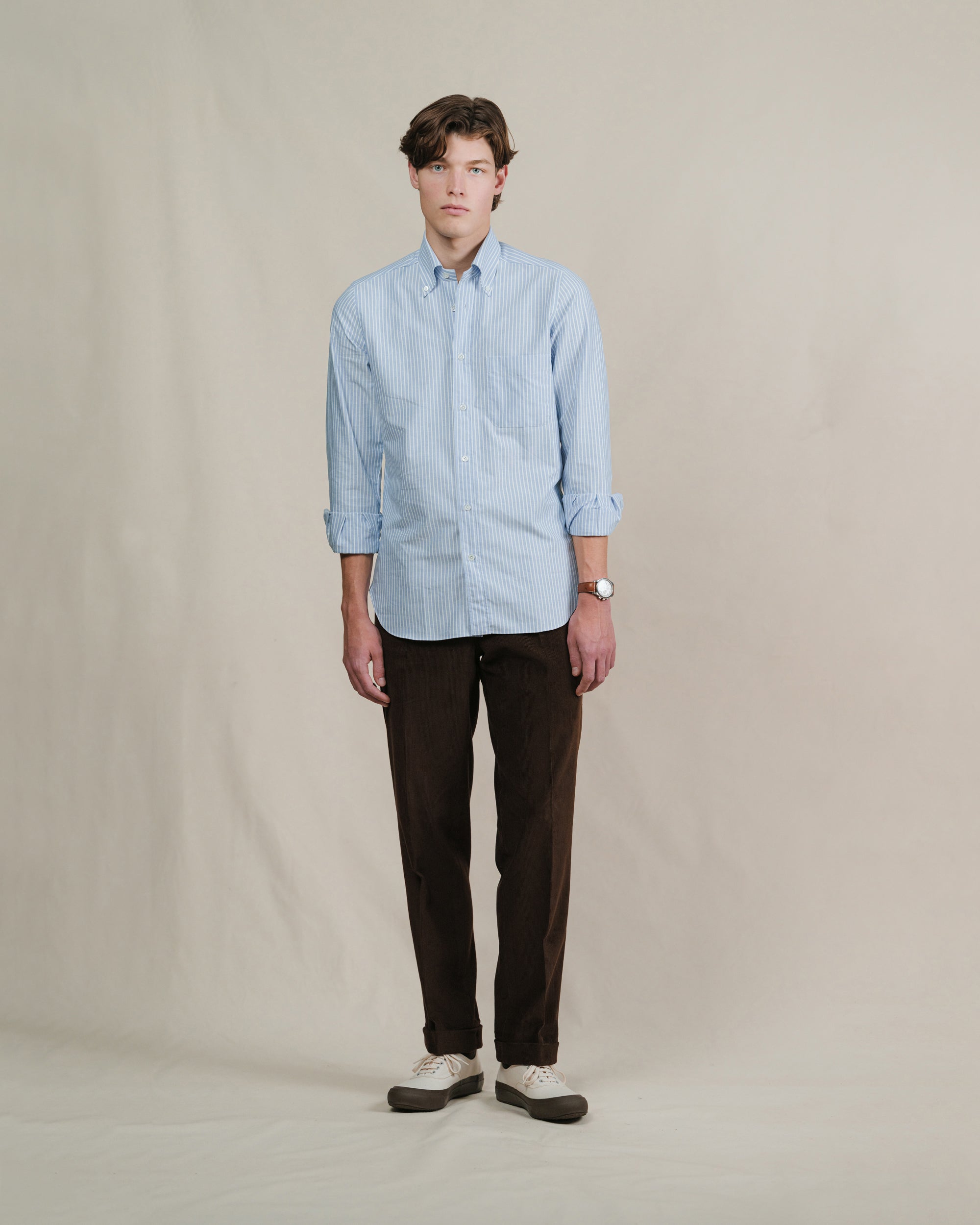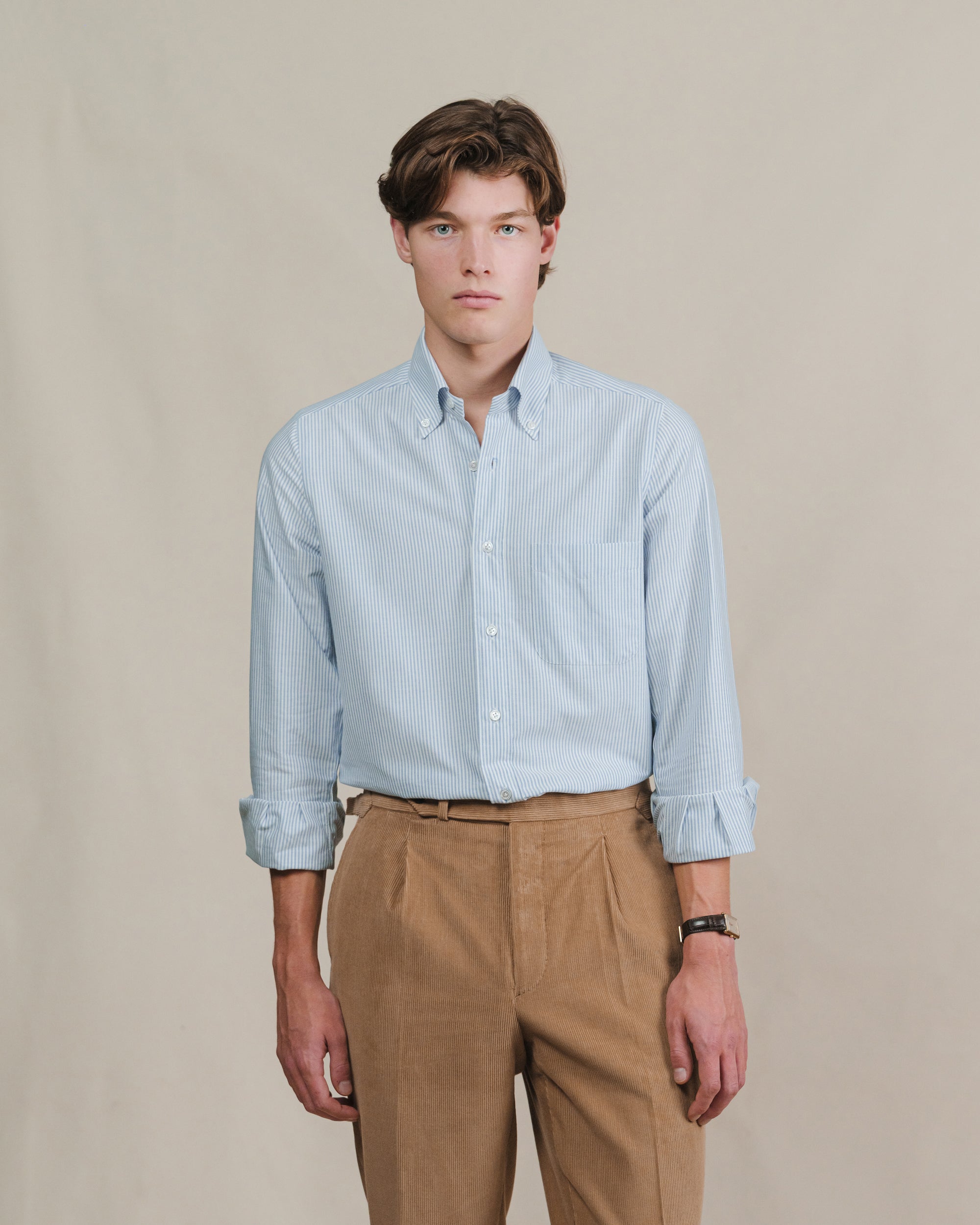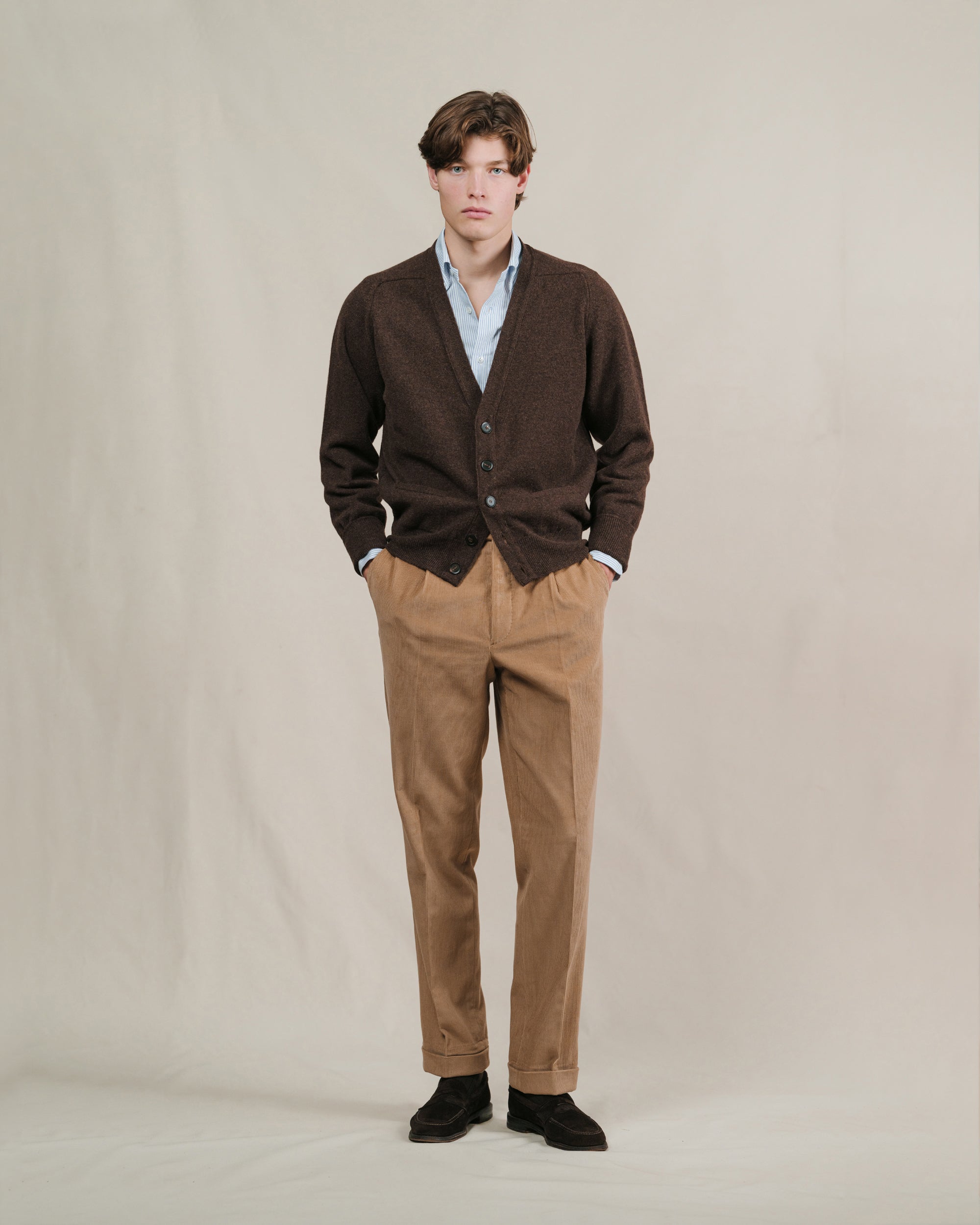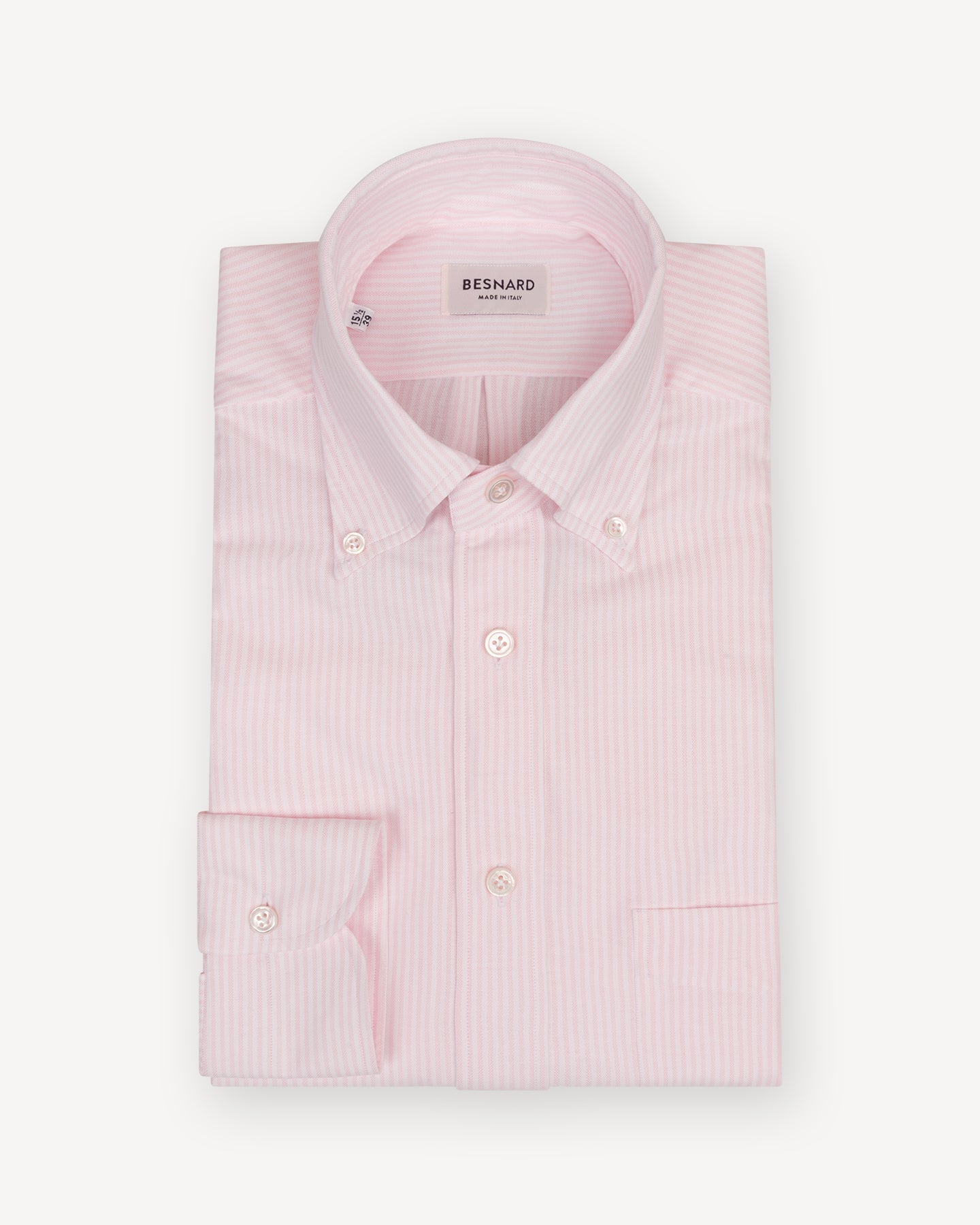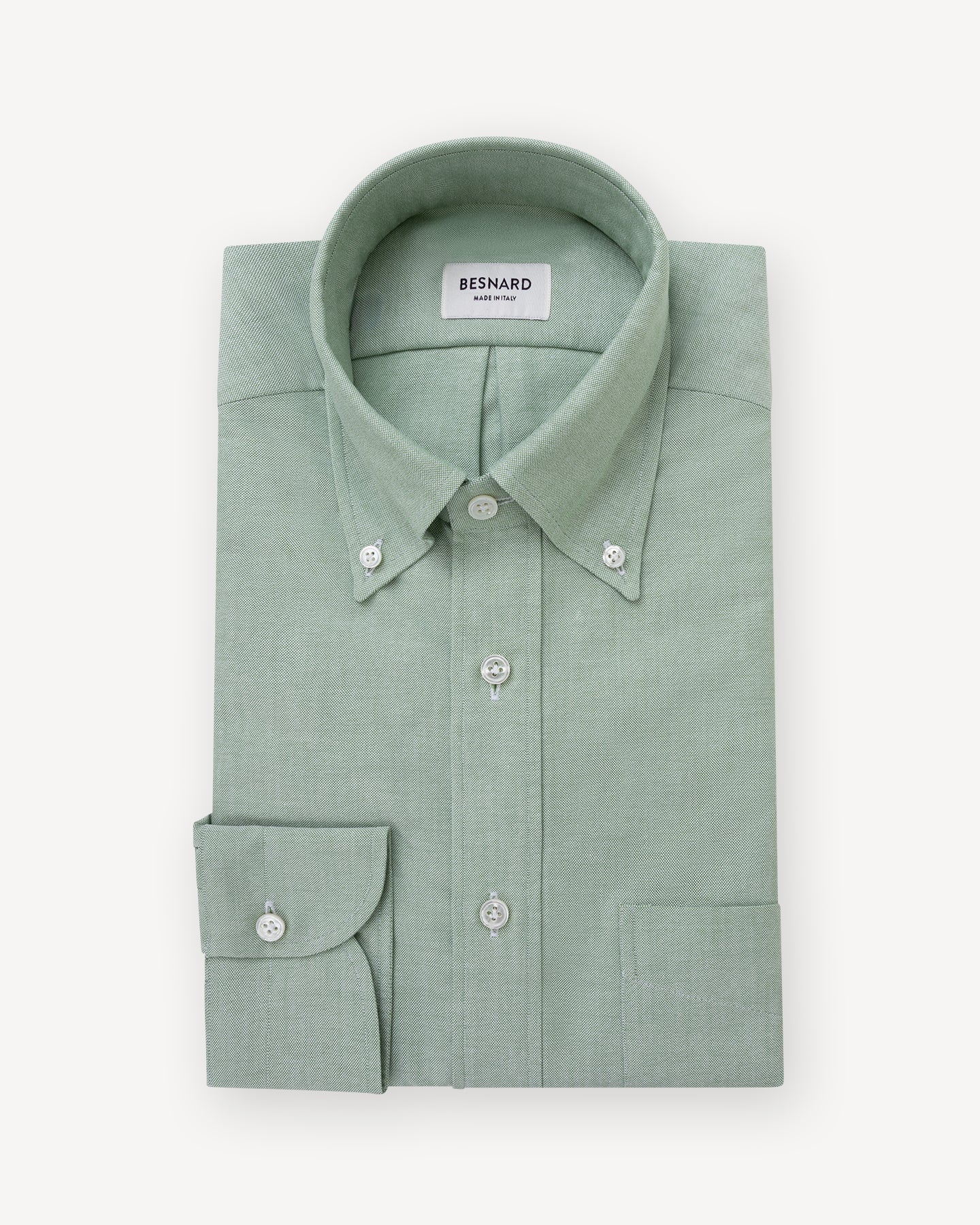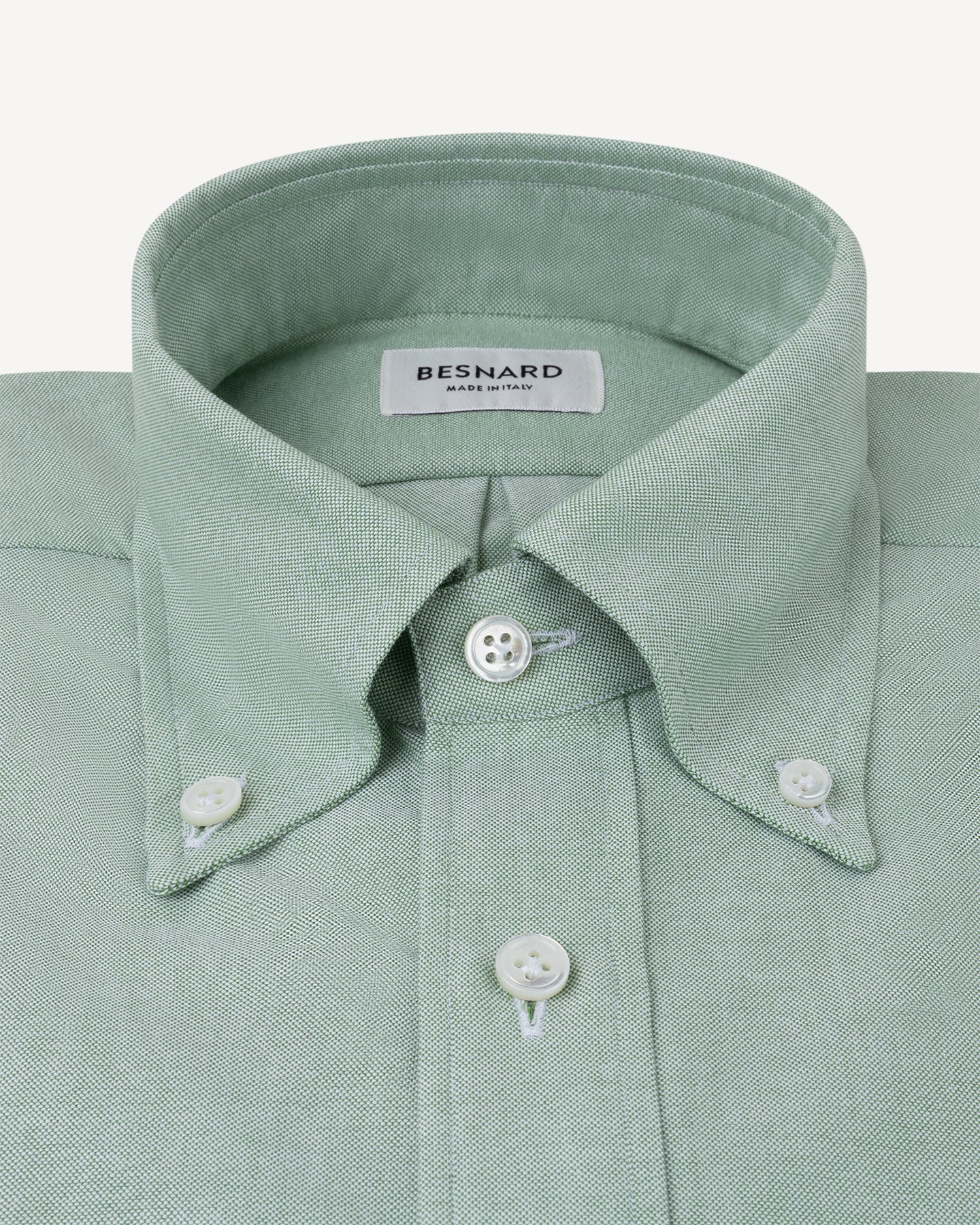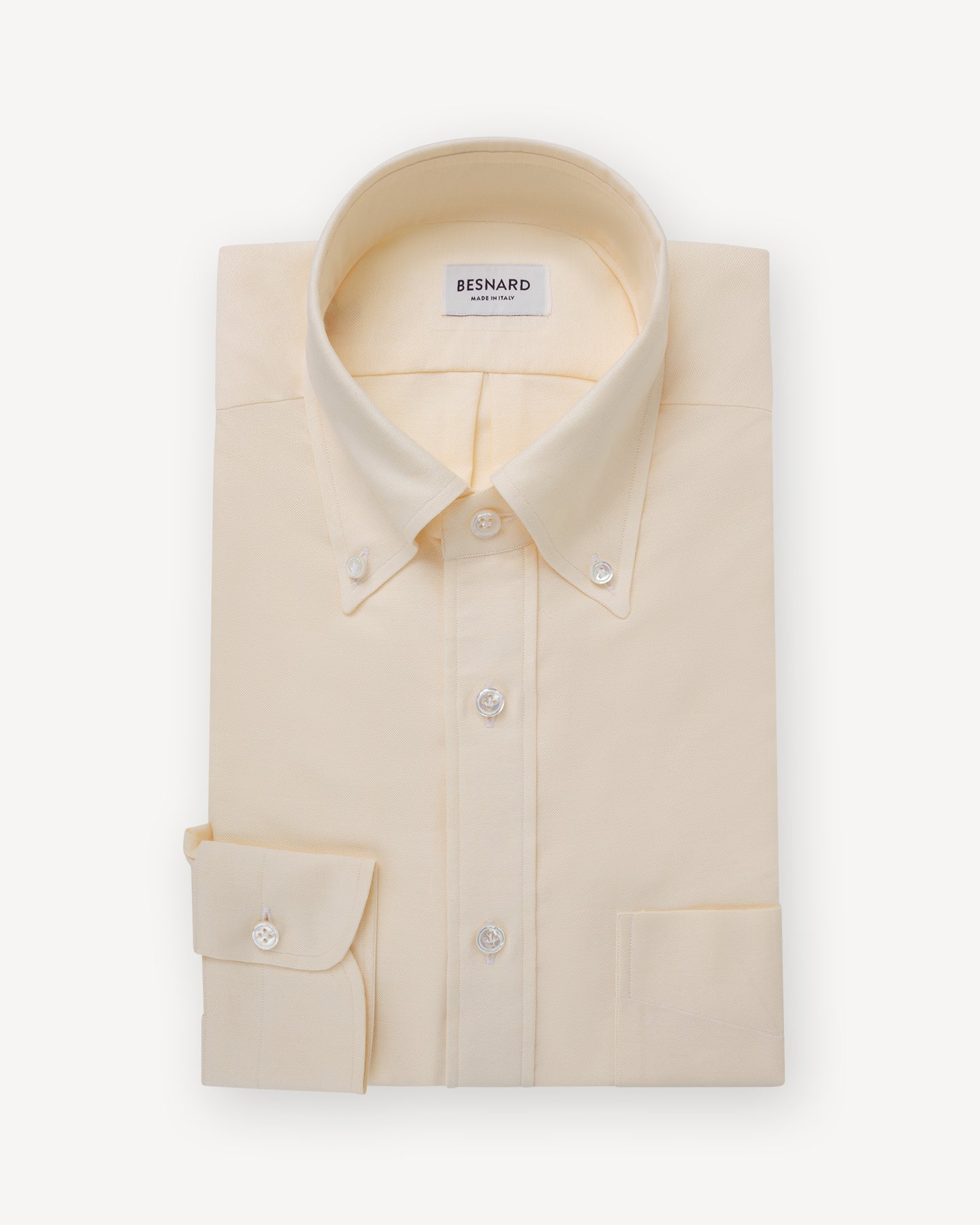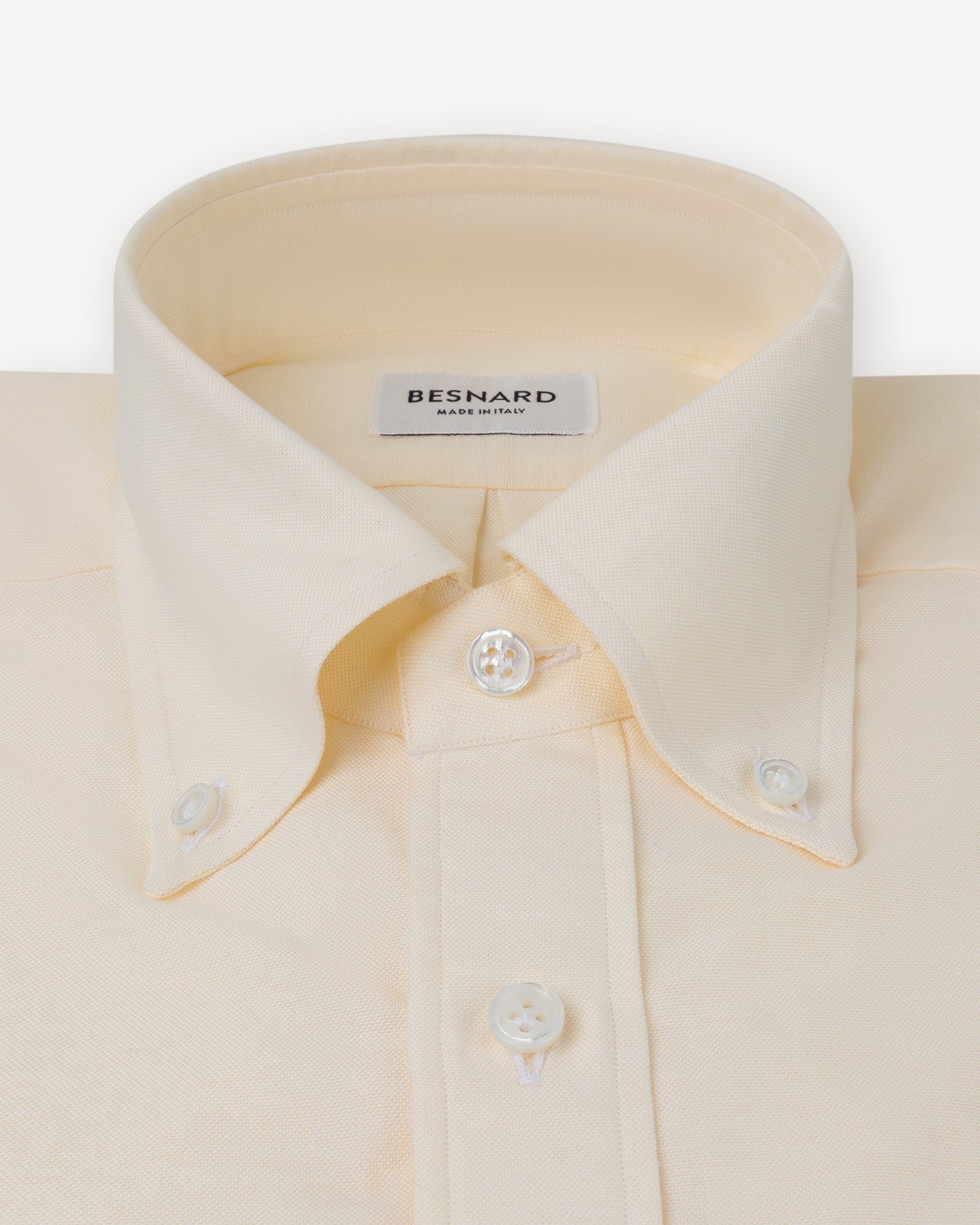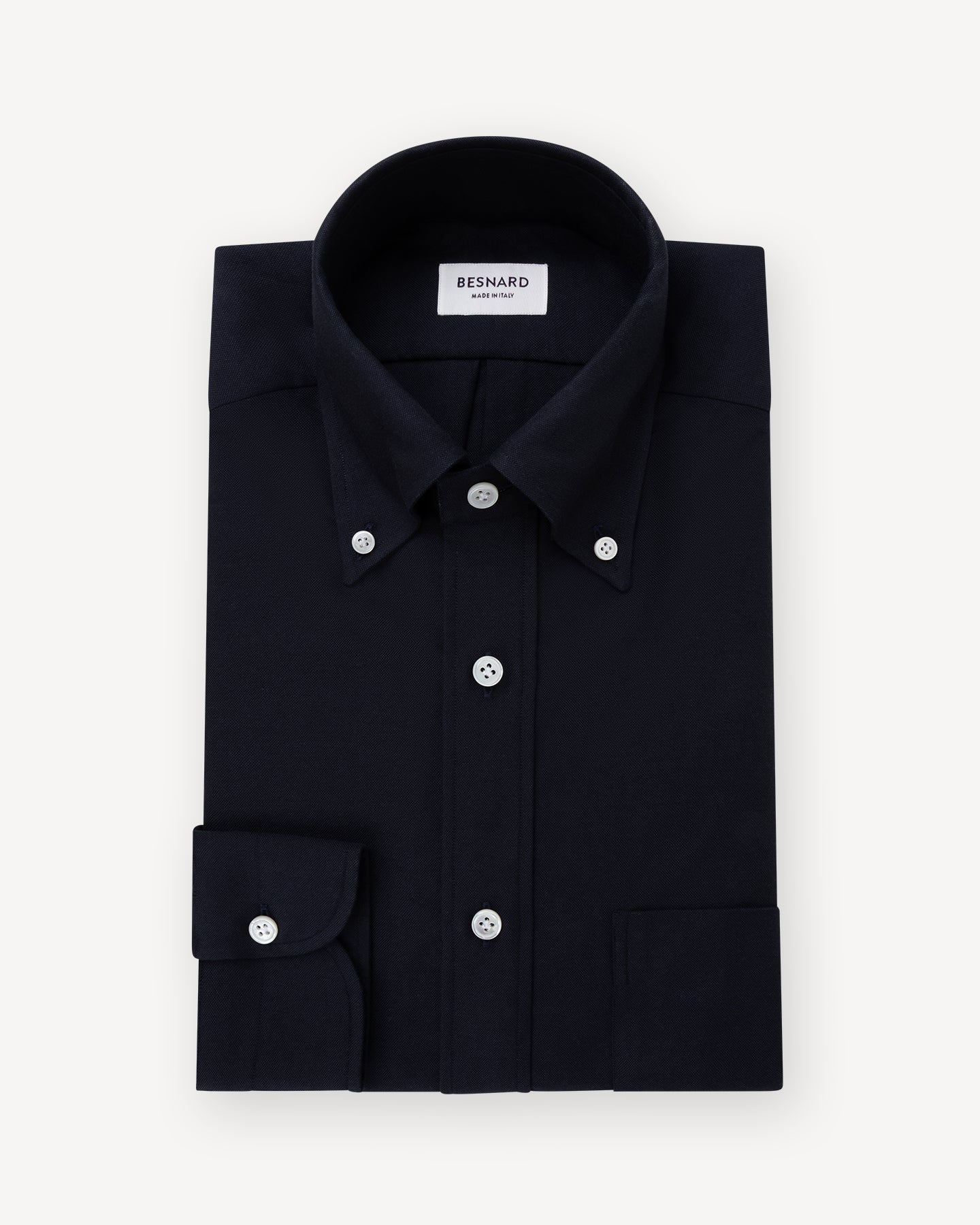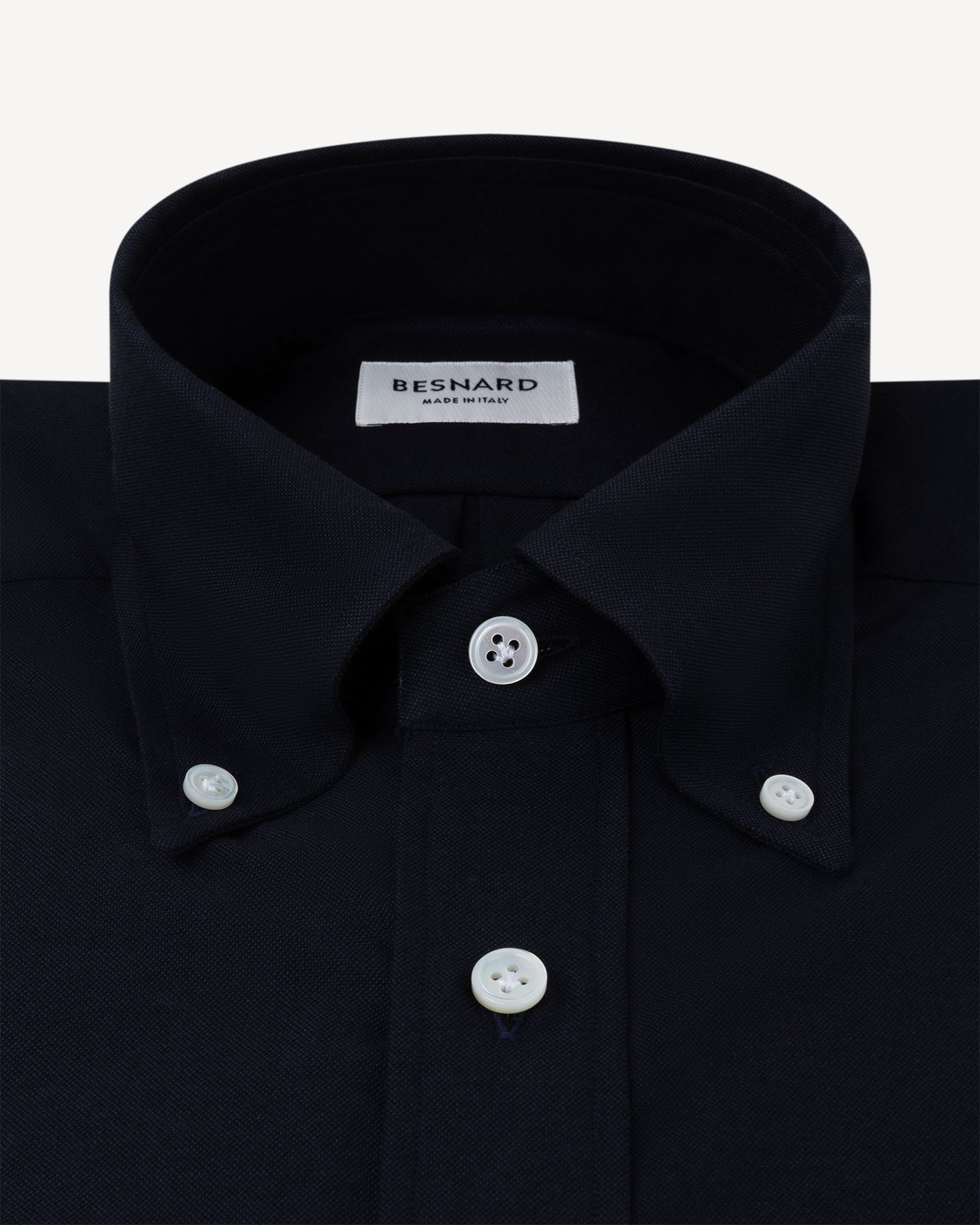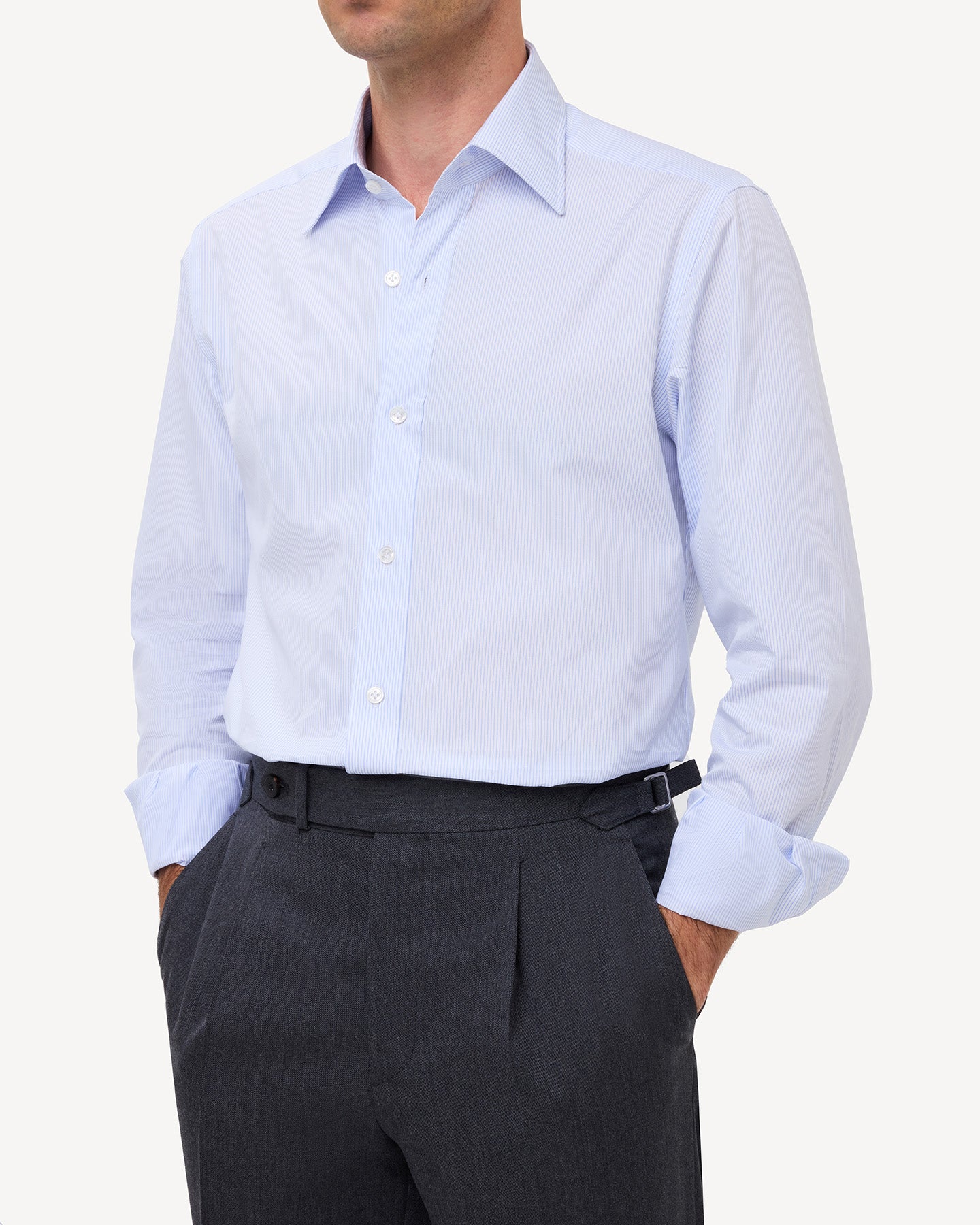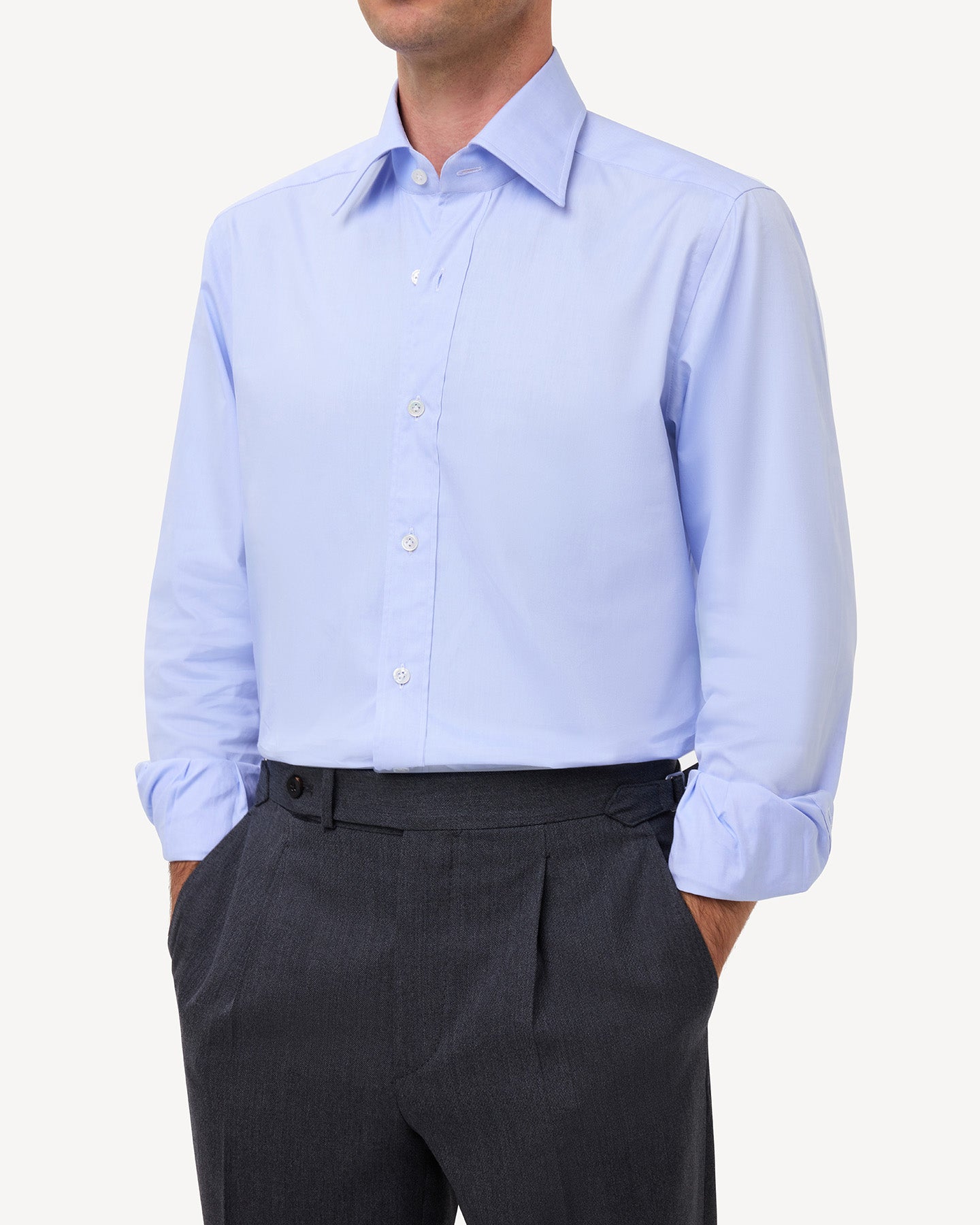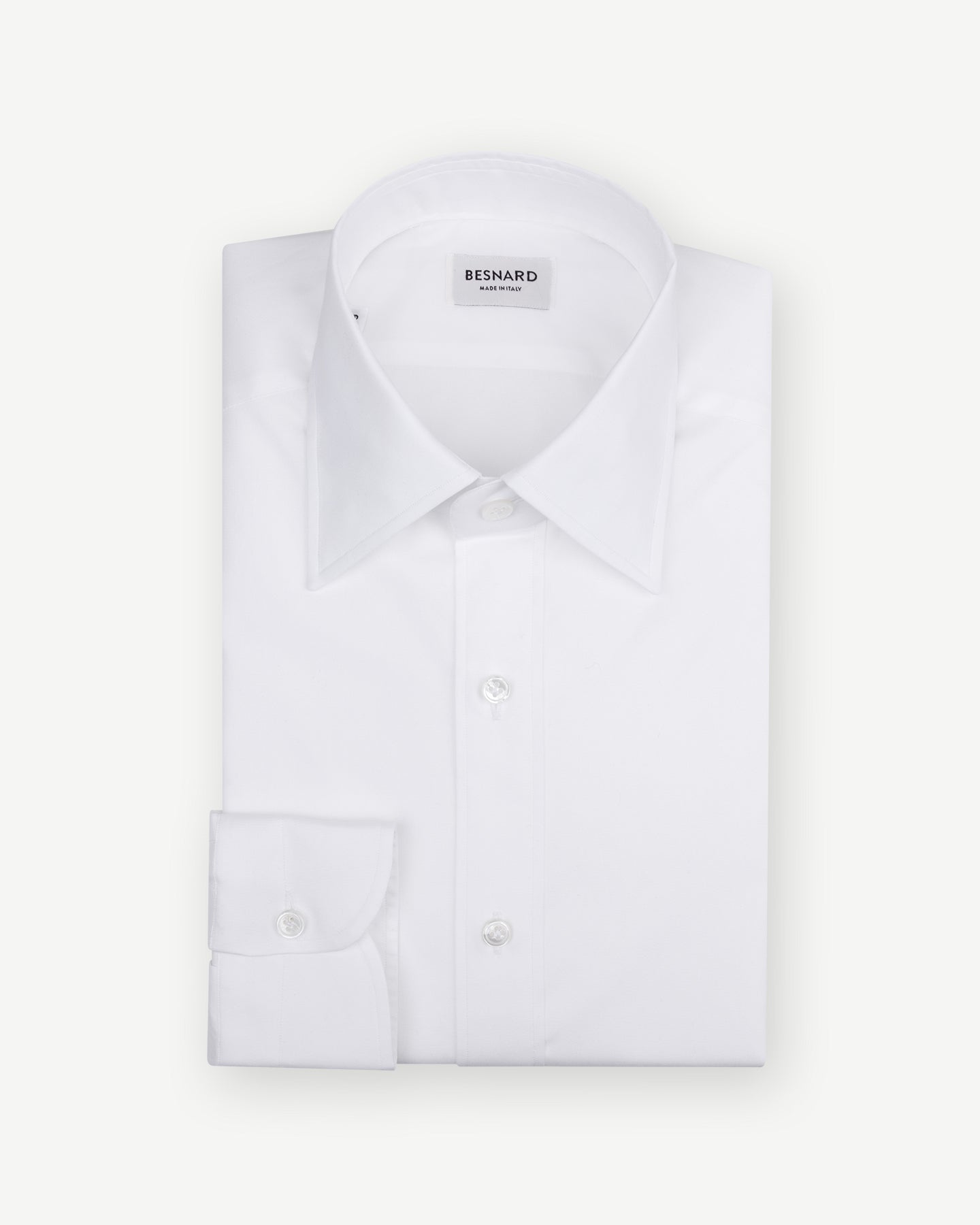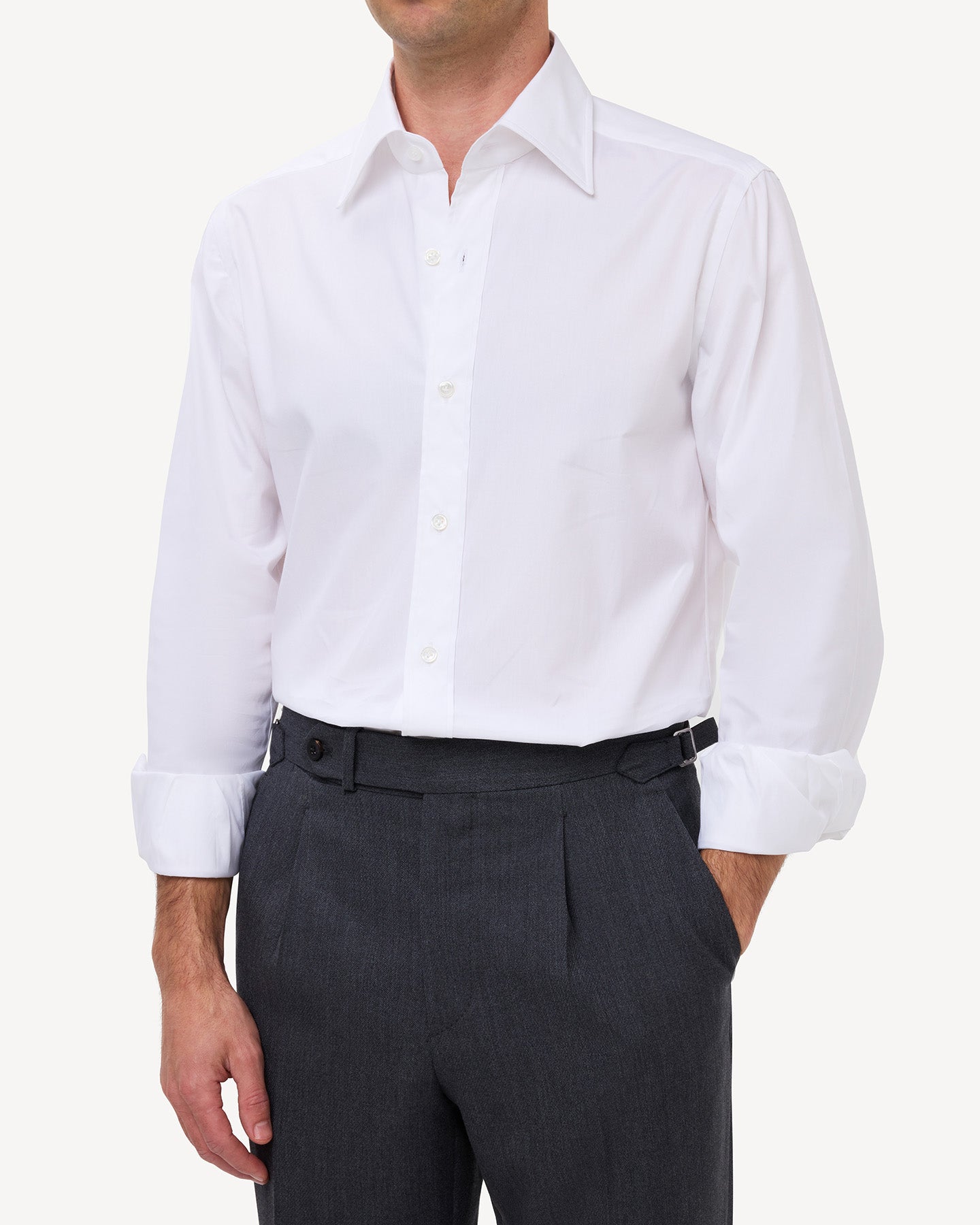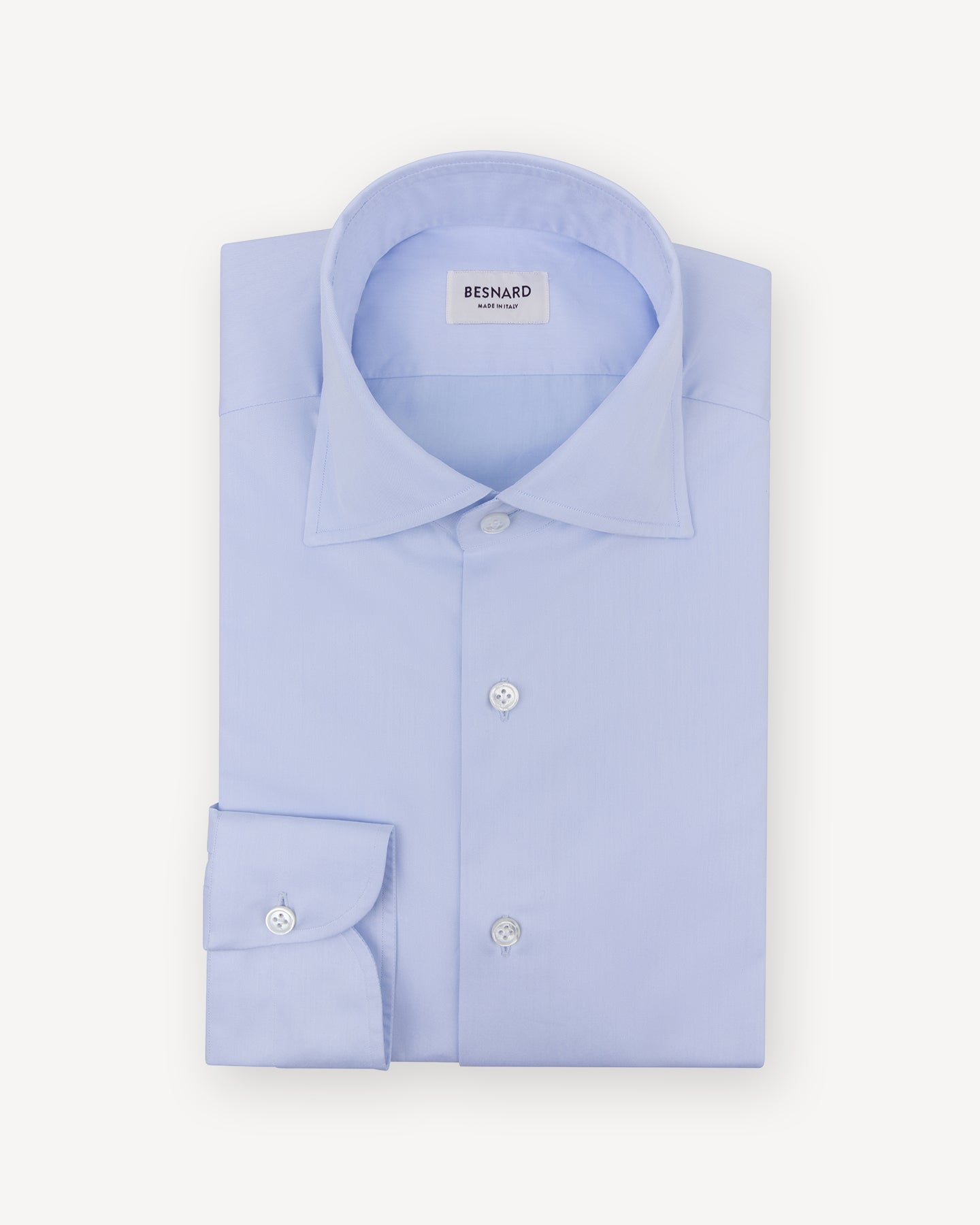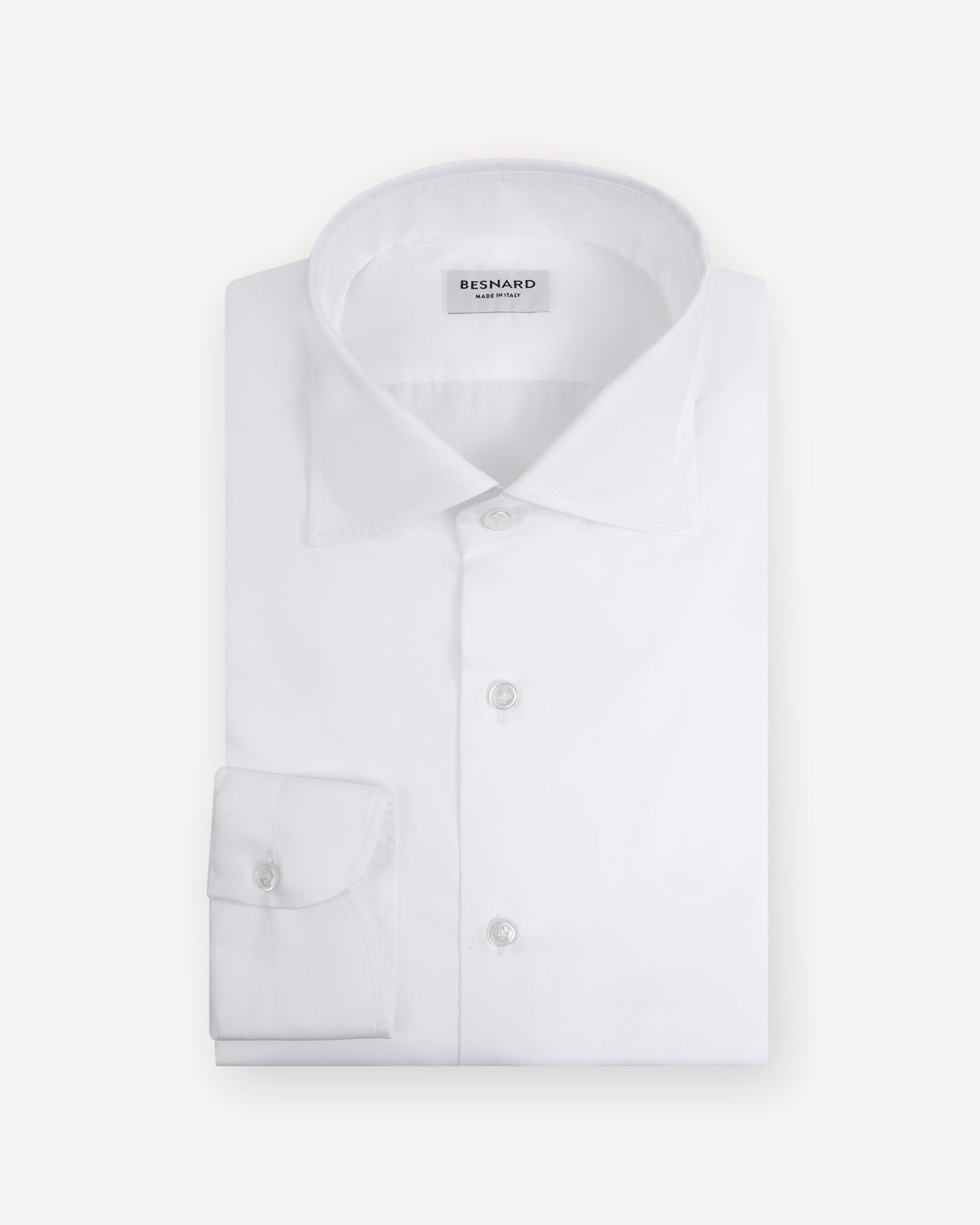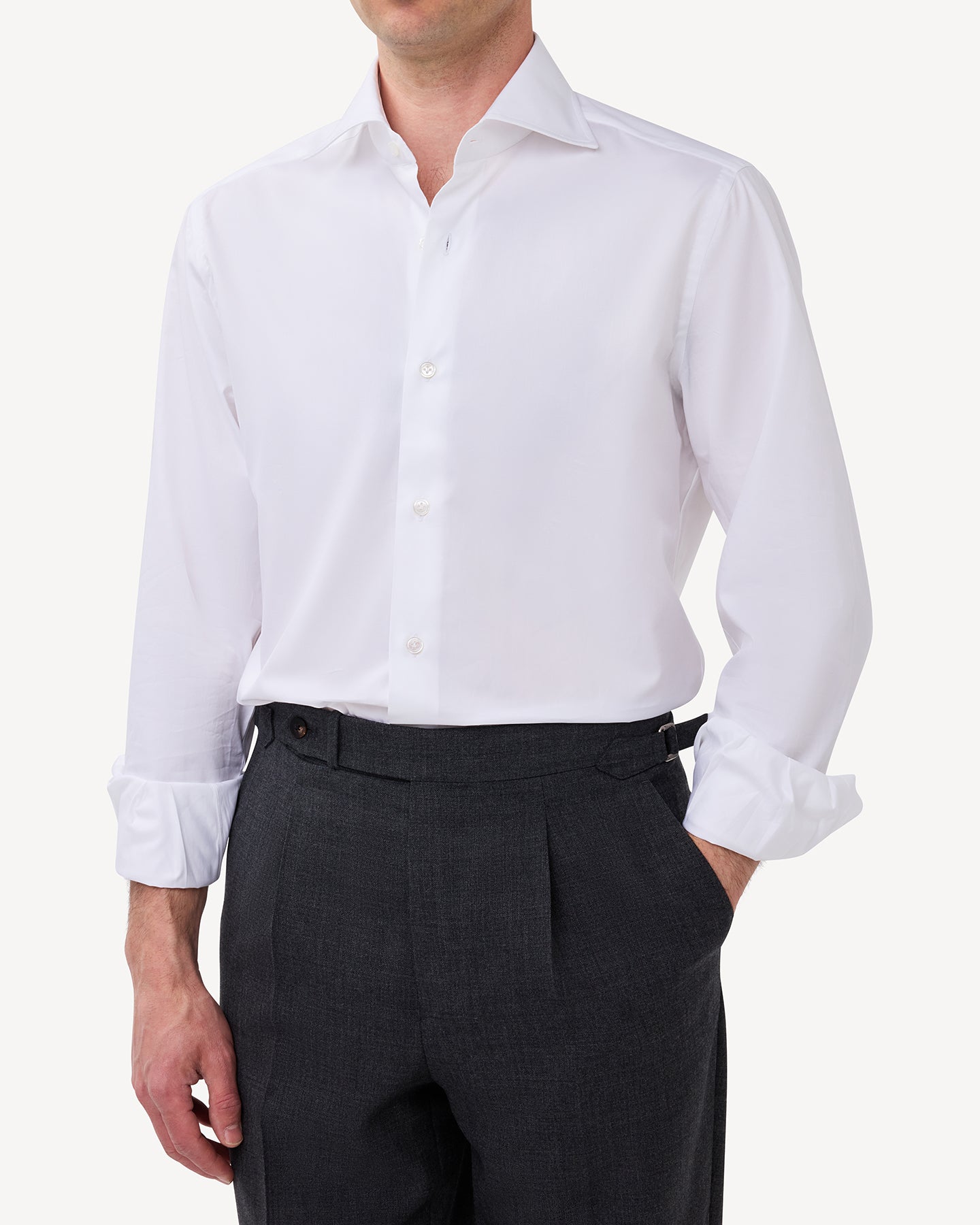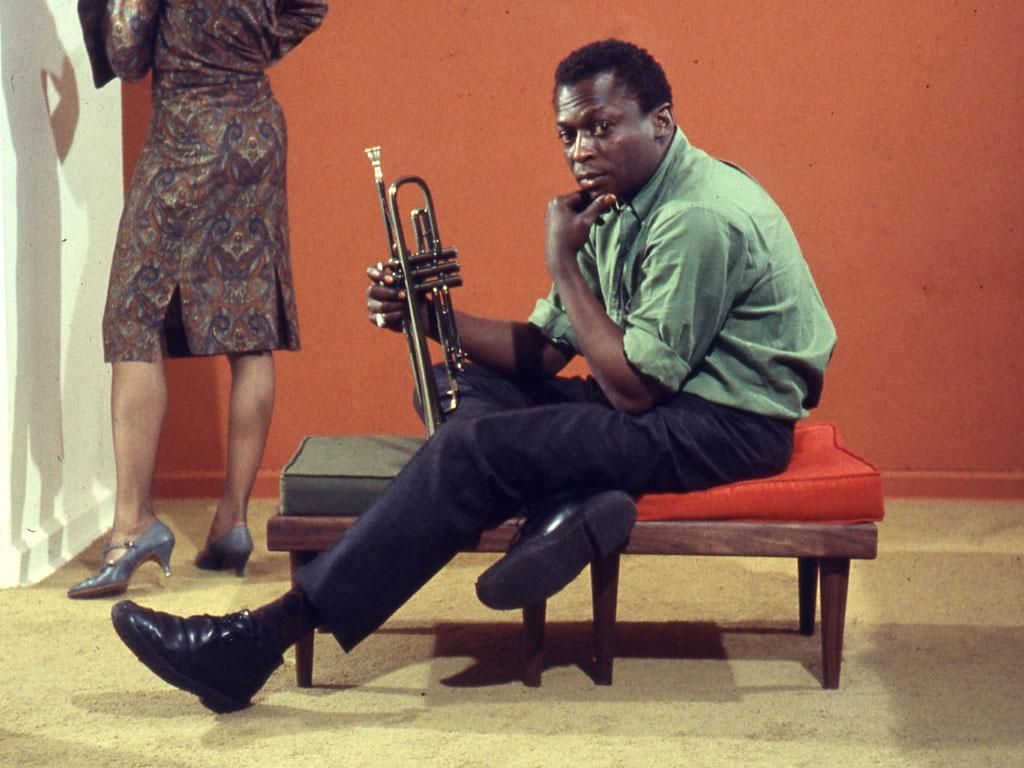
A Guide to Shirt Fabrics
Words by Victor Besnard
This shirt fabric guide explains how fabric defines a shirt’s character—how it feels, looks, and drapes.
Some fabrics, like linen, suit warm weather; others, such as cotton–cashmere, are better for autumn and winter. Cotton is by far the most common shirting material—comfortable, breathable, and wearable year-round.
Yet fabric quality depends on more than its raw material. You might have seen a description like “100s two-ply Egyptian cotton” and wondered what it means.
We explain the four key factors that shape a fabric’s quality and character: material, ply, yarn count, and weave.
Material
Whether it is woven from cotton, linen, wool, silk, or a blend of these, we recommend fabrics that are produced from 100% natural fibres. Since cotton is the most popular shirting, we will elaborate a bit on its origin.
Cotton is a soft, fluffy fibre that grows on the Gossypium plant. The length of the fibre largely determines its quality. Longer fibres can be spun into finer yarns without sacrificing strength. Some types of cotton—such as Egyptian and American Pima cotton—have extra-long fibres and are therefore known to produce the finest fabrics.

In the Caribbean, unique weather conditions produce one of the rarest and finest cottons: Sea Island cotton. Apart from being the rarest and finest, it is also the most expensive cotton in the world.
A fabric without a stated origin isn’t necessarily inferior. Some mills promote provenance; others simply don’t.
Weave
Where the fabric shapes the character of the shirt, the weave shapes the character of the fabric.
Put simply, the weave is how yarns are interlaced to create fabric. Yarns that run vertically are called warps; horizontal yarns are called wefts. The pattern, direction, and number of wefts and warps are defined by the weave.

Most shirting fabrics fall into three categories: plain, twill, and basket weave.
Twill
The twill weave has a weft yarn that runs over and under multiple warp yarns. It’s easily recognised by its distinctive diagonal texture. Twills are denser than other weaves and often have a slight sheen, making them well suited to formal shirts.
 |
 |
But there are casual twill weaves too, such as denim, where the indigo-dyed warp creates its relaxed character. Other familiar variations include herringbone and houndstooth. A benefit of twill fabrics is that they’re usually easy to iron and don’t crease as much.
Plain
The plain weave follows a simple over–under pattern. The best-known example is poplin. End-on-end—also known as fil-à-fil—is another plain weave, where the warp yarn has a different colour from the weft, producing a rich, heathered texture.
 |
 |
Both are crisp fabrics and excellent options for business shirts. They’re less absorbent and more prone to creasing than twills, for instance.
Basket
The basket weave—also known as the panama weave—has multiple weft threads that run over an equal number of warp threads. The most famous version is Oxford cloth, in which a coloured weft crosses a white warp to create a distinctive checkerboard appearance.
 |
 |
Oxford cloth is used so often for button-down shirts that it’s become an icon in itself—the Oxford Cloth Button Down, or OCBD. It’s an ideal choice for casual shirts: absorbent, breathable, and easy to iron.
 |
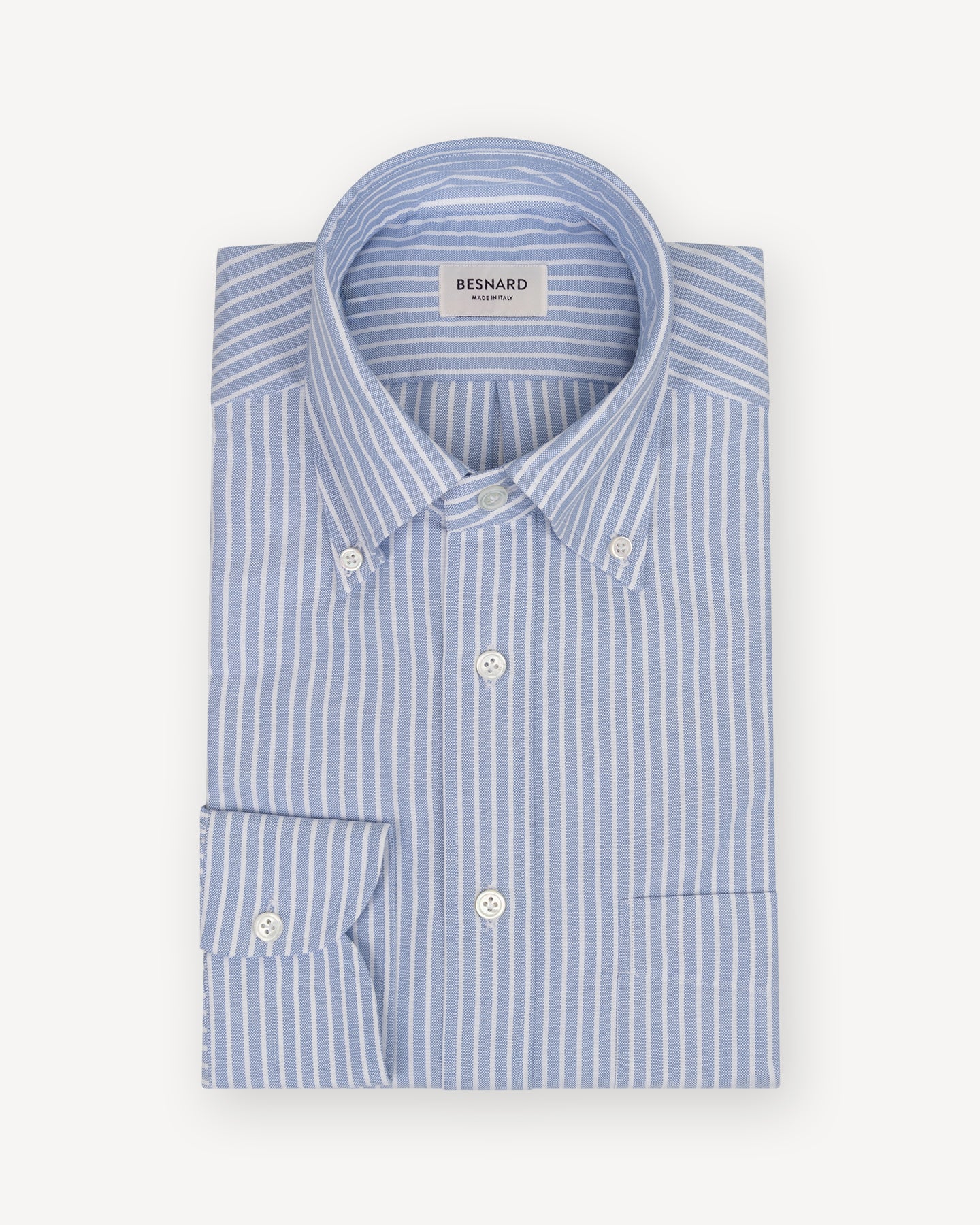 |
 |
| Light Blue OCBD Shirt | Blue Reverse Stripe OCBD Shirt | Green OCBD Shirt |
If you like Oxford cloth but need something more refined for business wear, consider pinpoint Oxford or royal Oxford. They share similar qualities but have a smoother, more formal look.
Single ply, two-ply and three-ply
You’ve probably seen the term two-ply—or two-fold—cotton in descriptions of premium fabrics. Ply refers to the number of fibres spun into a yarn. Single-ply means a yarn is spun from one fibre; when two fibres are twisted together, it’s called two-ply. Two-ply yarns are stronger, more durable, and add noticeable value to a shirt.

You may see a fabric’s construction described as “80/2x80/2”. This means that both the warp and weft use two-ply yarns. The number 80 refers to the yarn count, which we’ll cover next.
Yarn count
Yarn count, sometimes called thread count, refers to the fineness of the yarns used to make the fabric. Higher yarn counts produce softer, silkier fabrics.
It’s similar to the “super” numbers used for suit fabrics: a Super 150s cloth feels very soft but isn’t especially durable.

As a rule of thumb, choose a yarn count between 80 and 120 for business shirts. For casual shirts like an Oxford Cloth Button Down, a lower yarn count is common—it keeps the fabric matte and helps resist creasing.
Explore our collection to discover shirts in a range of fabrics, colours, and weaves.


